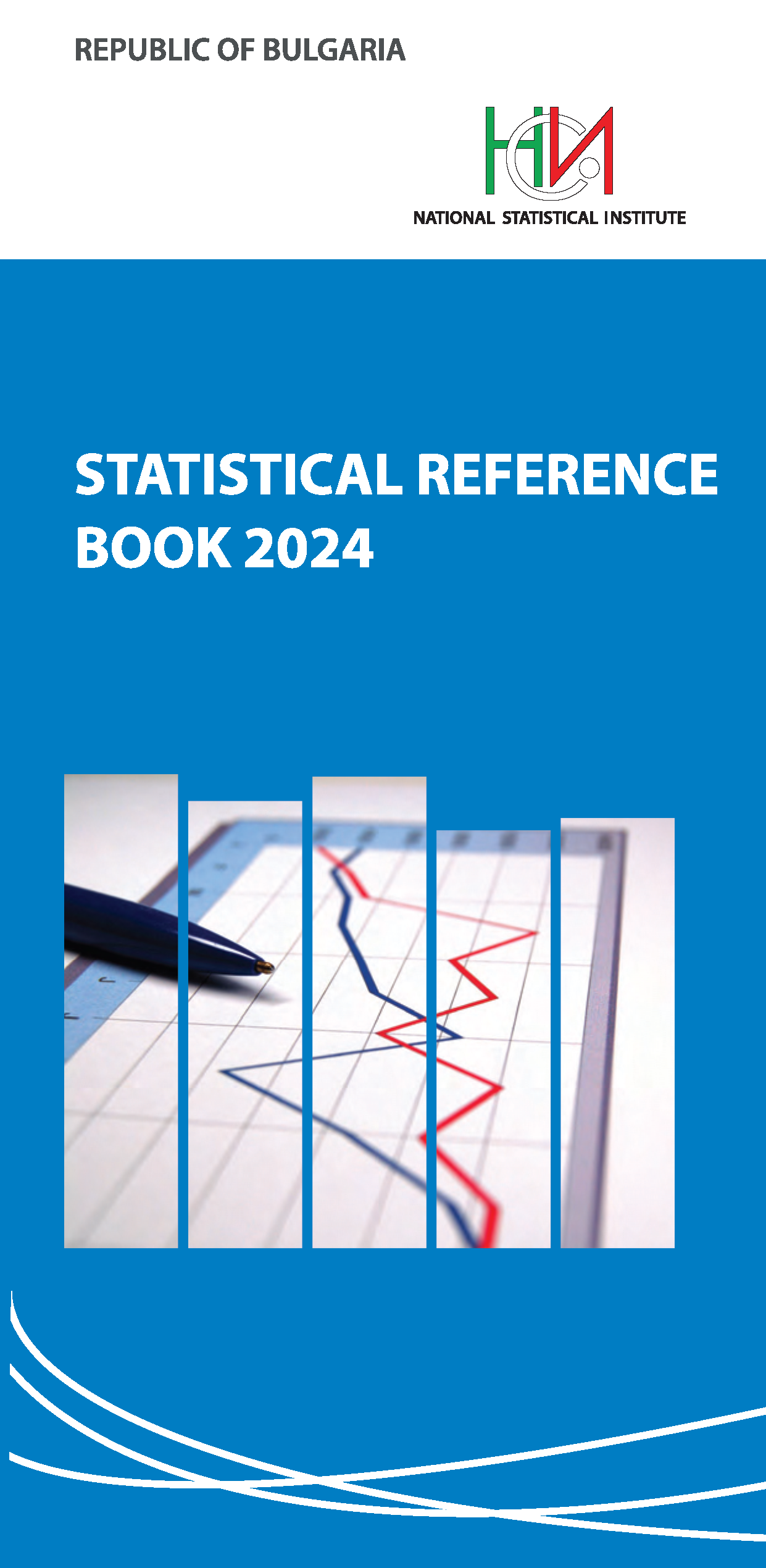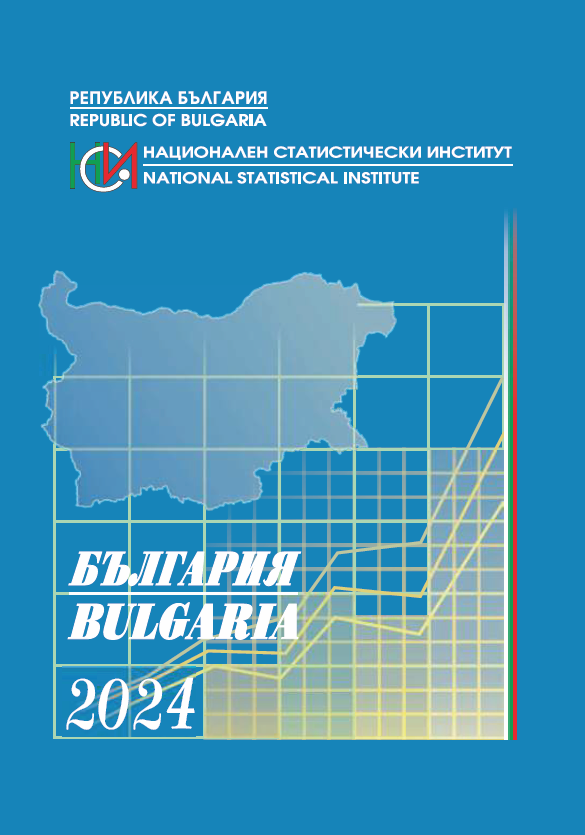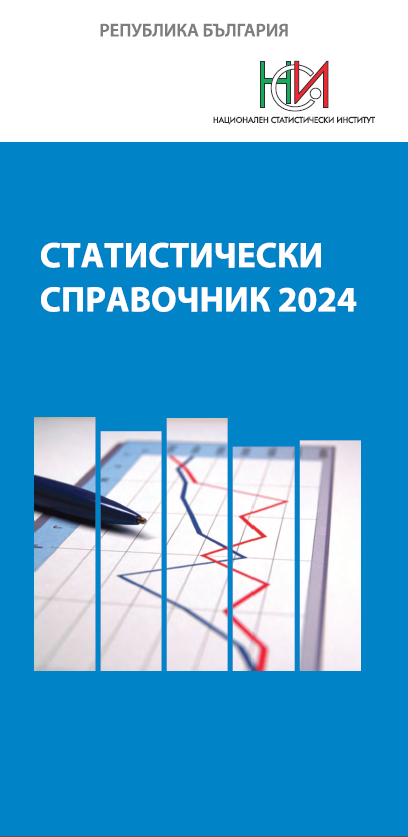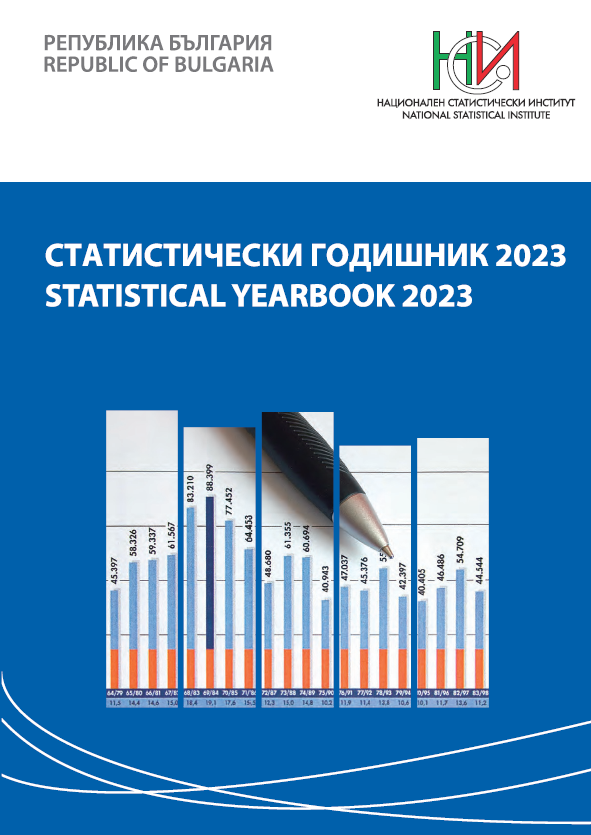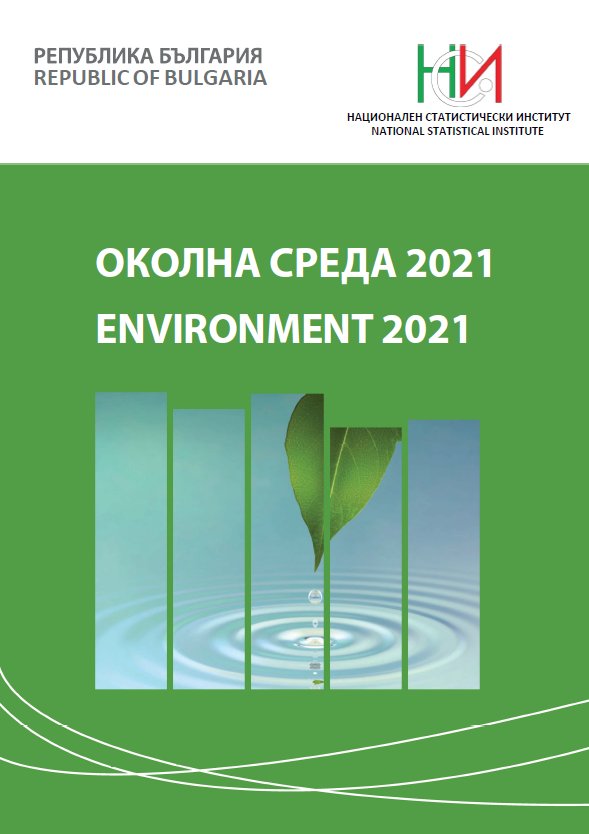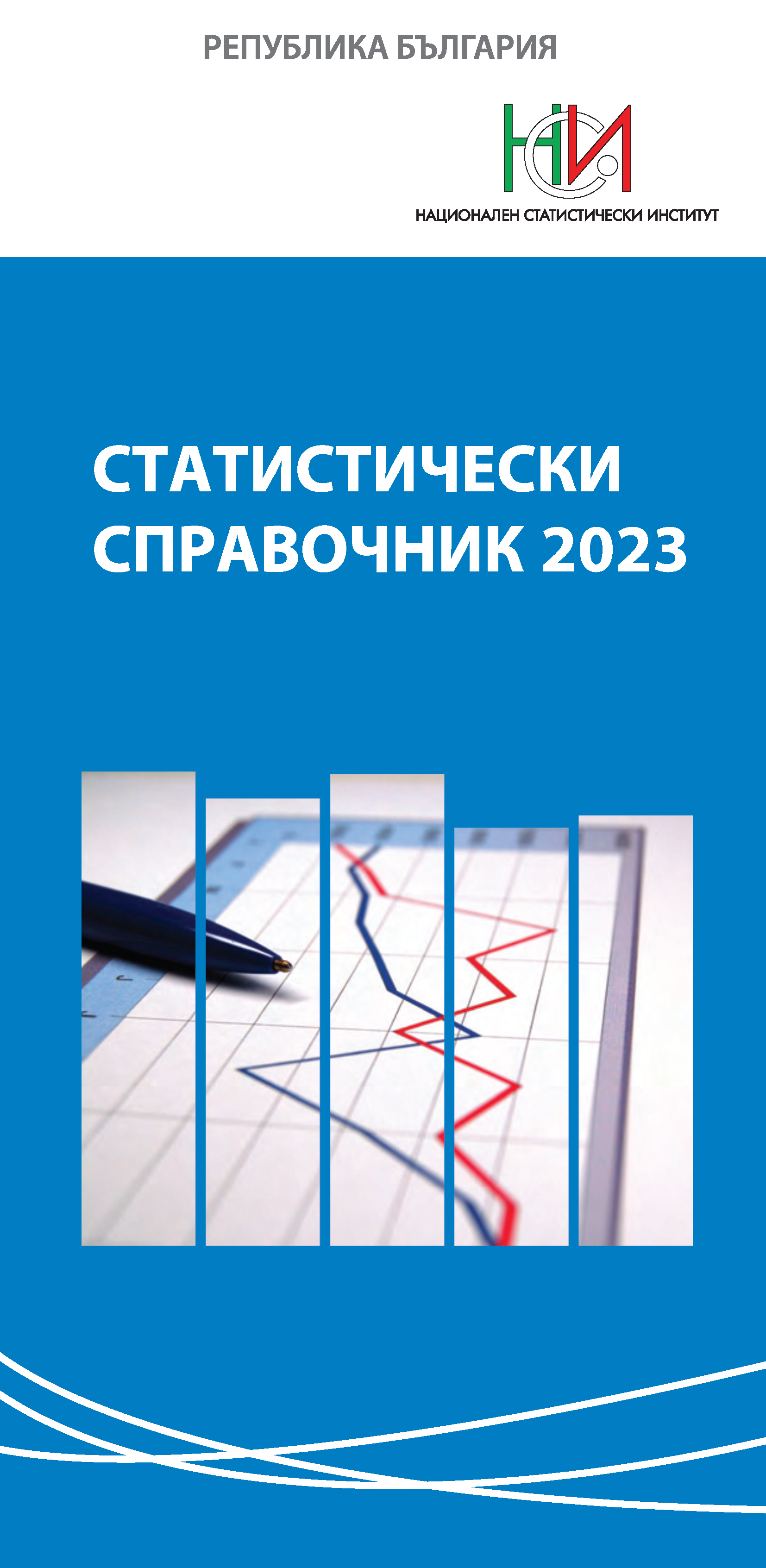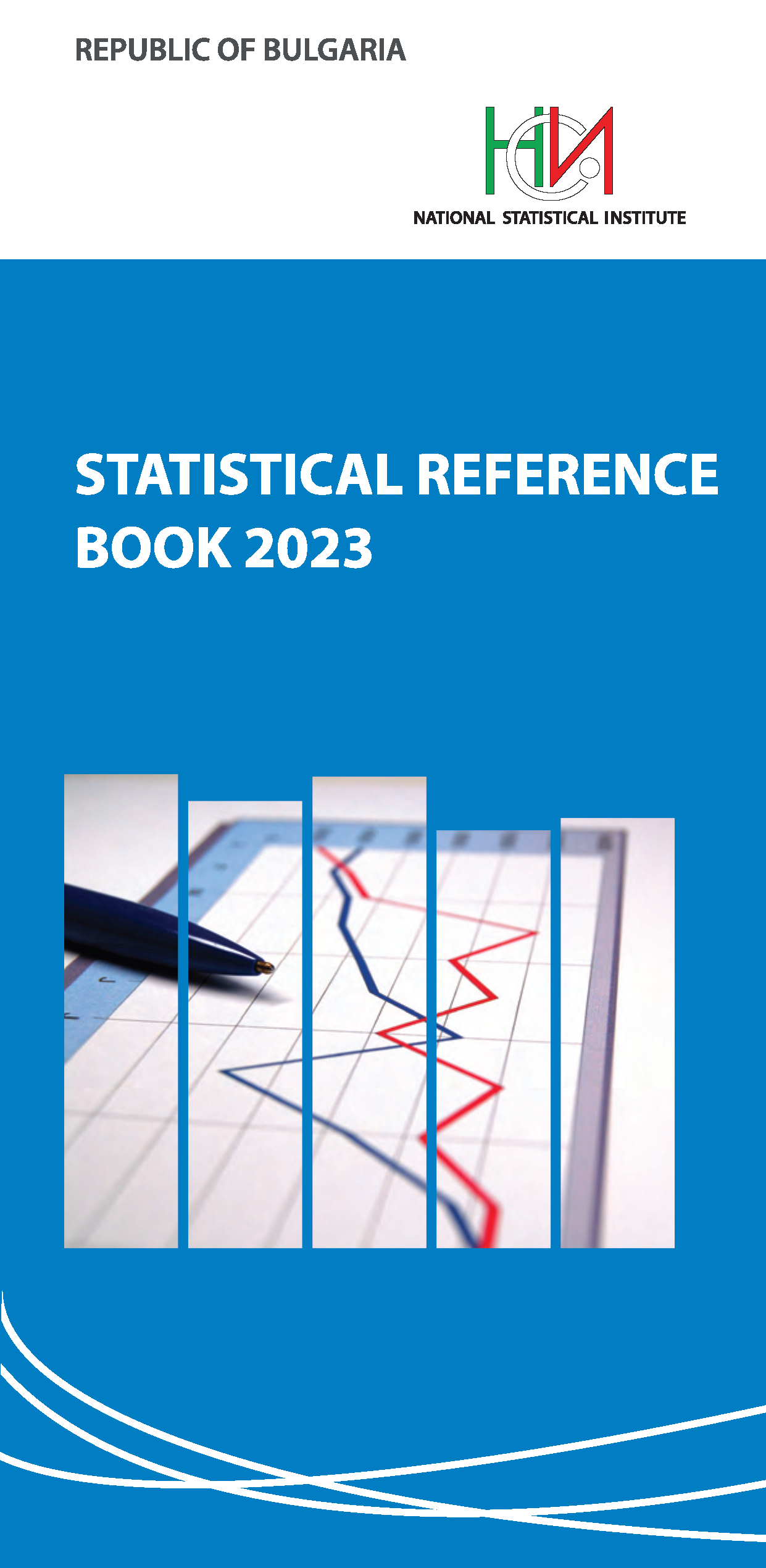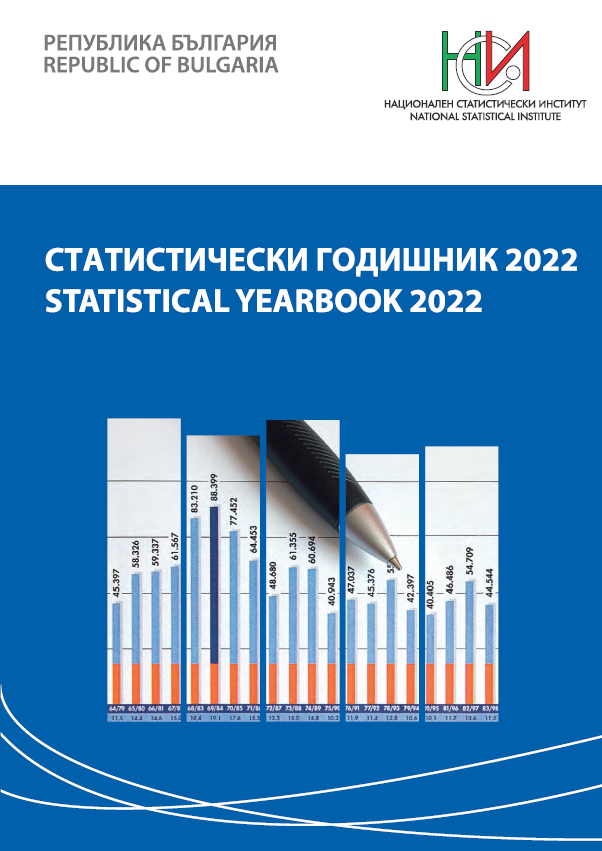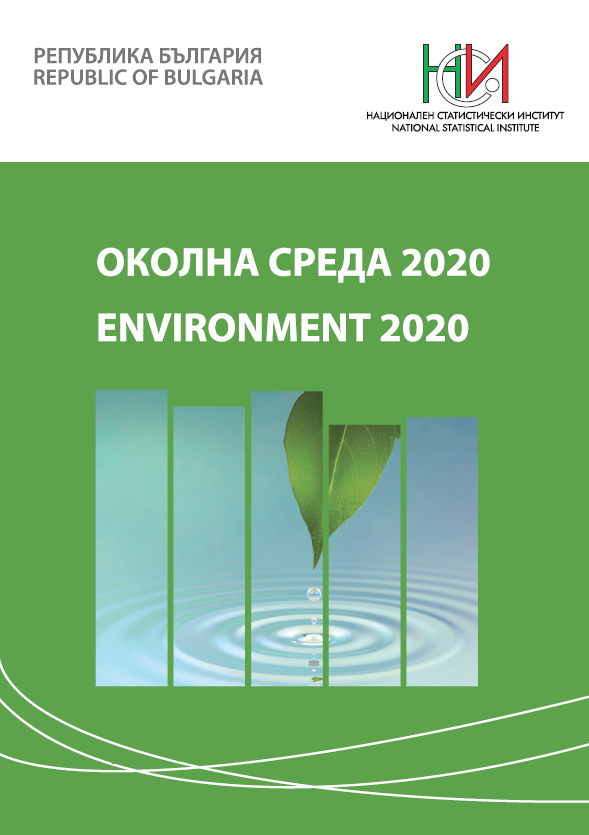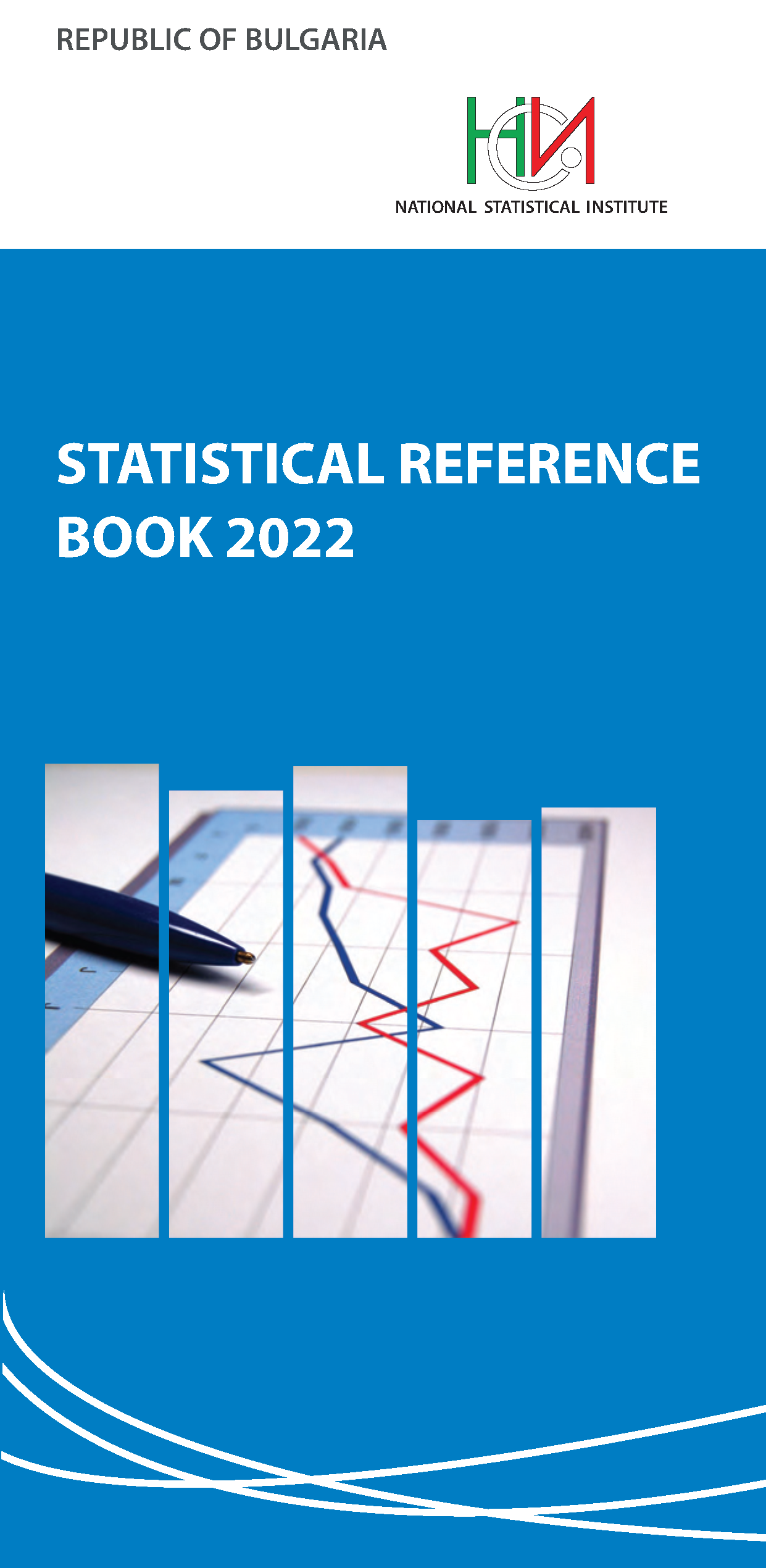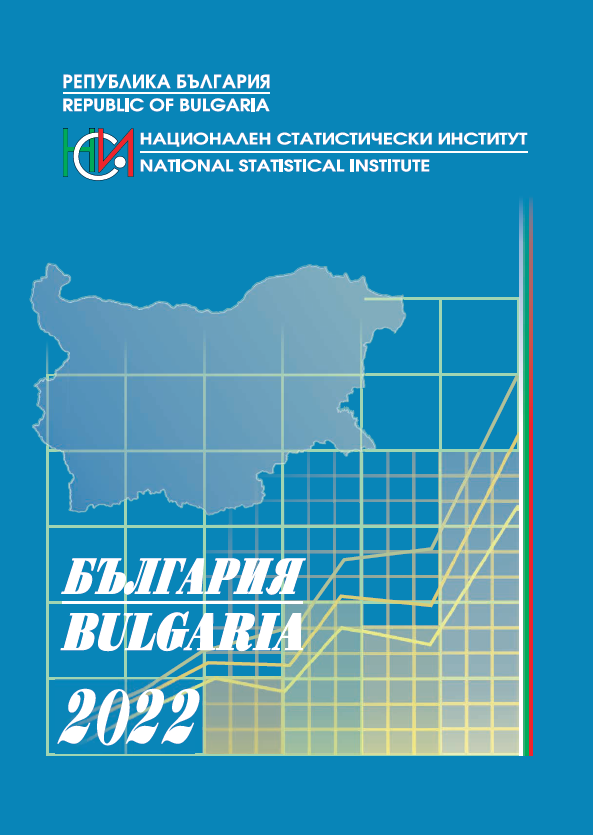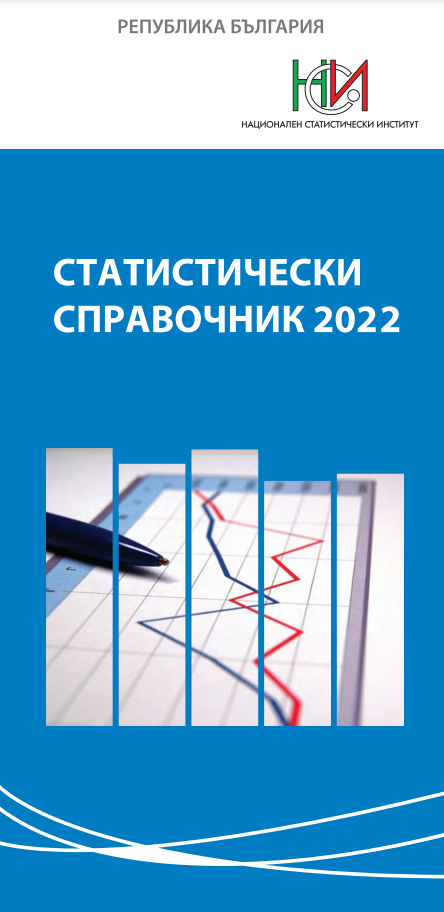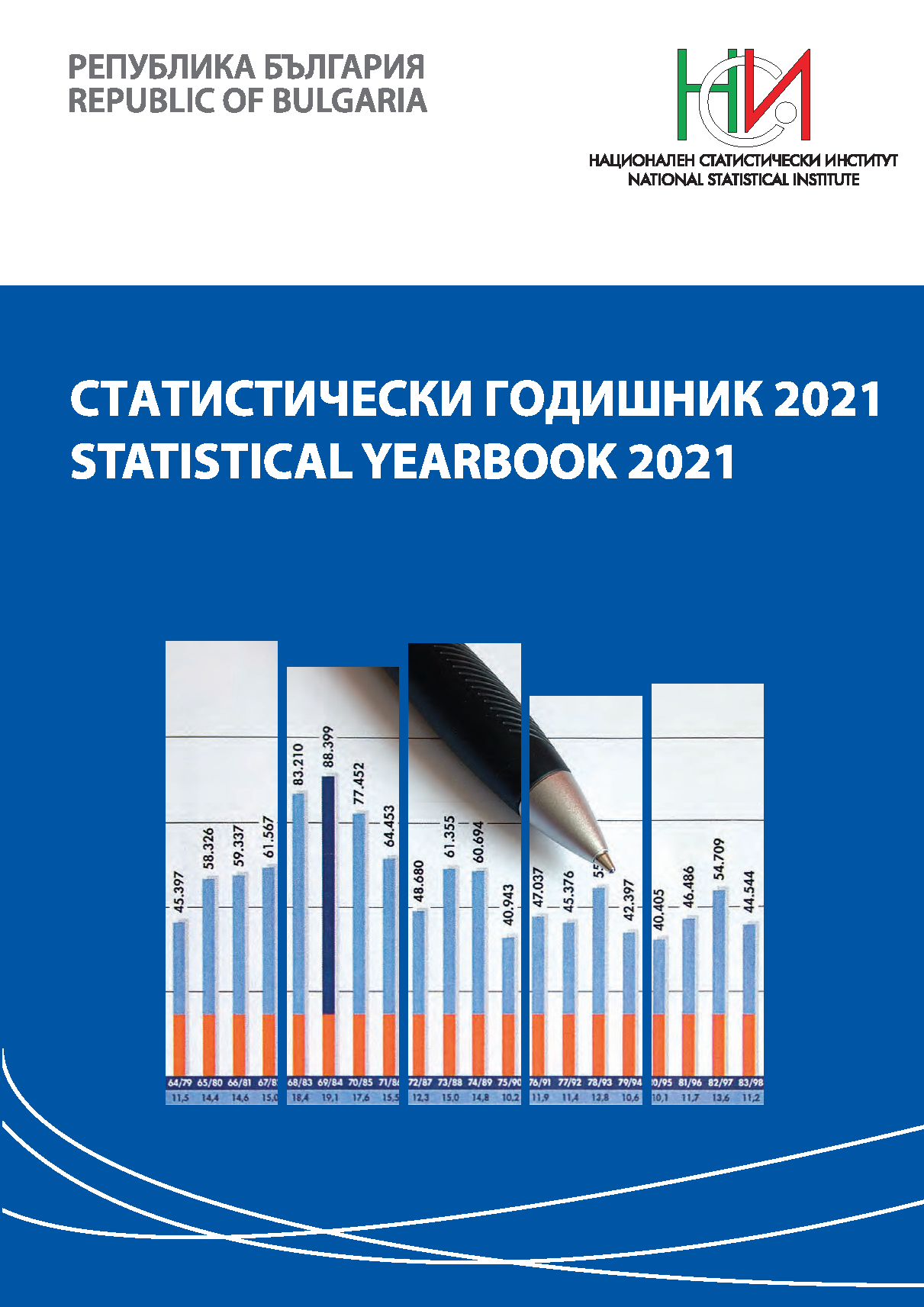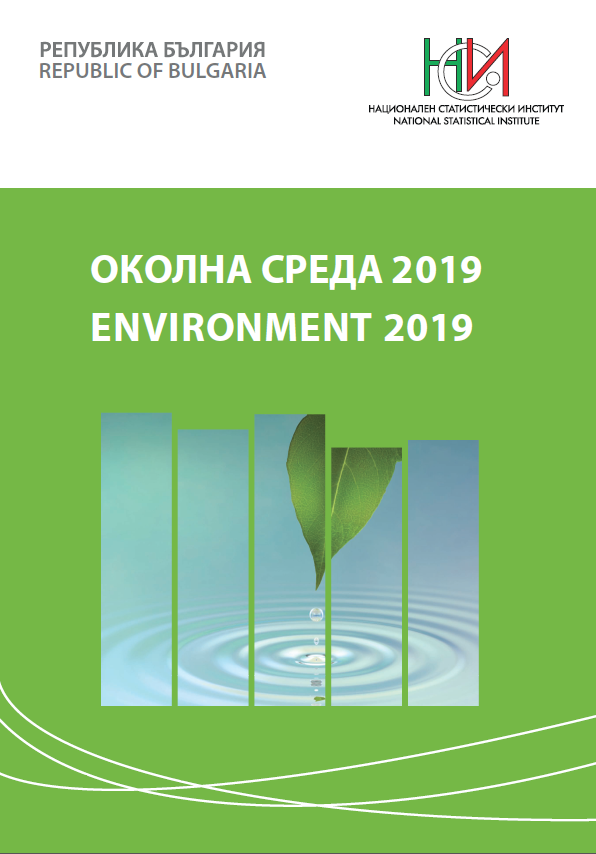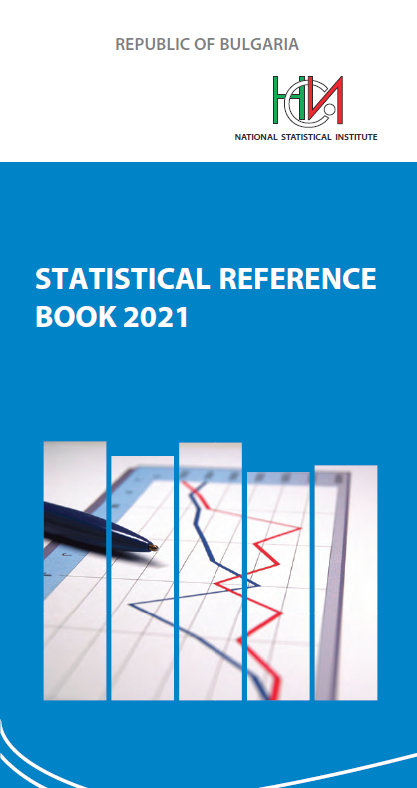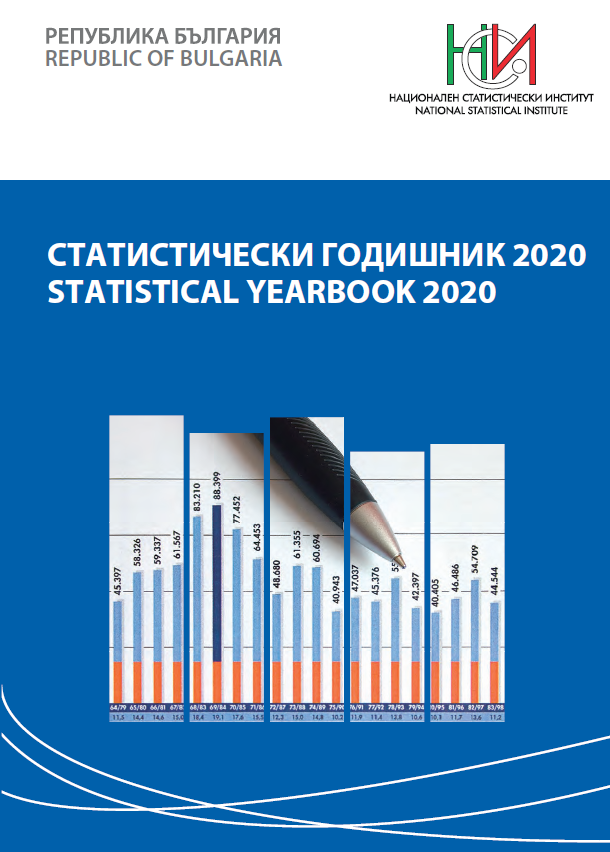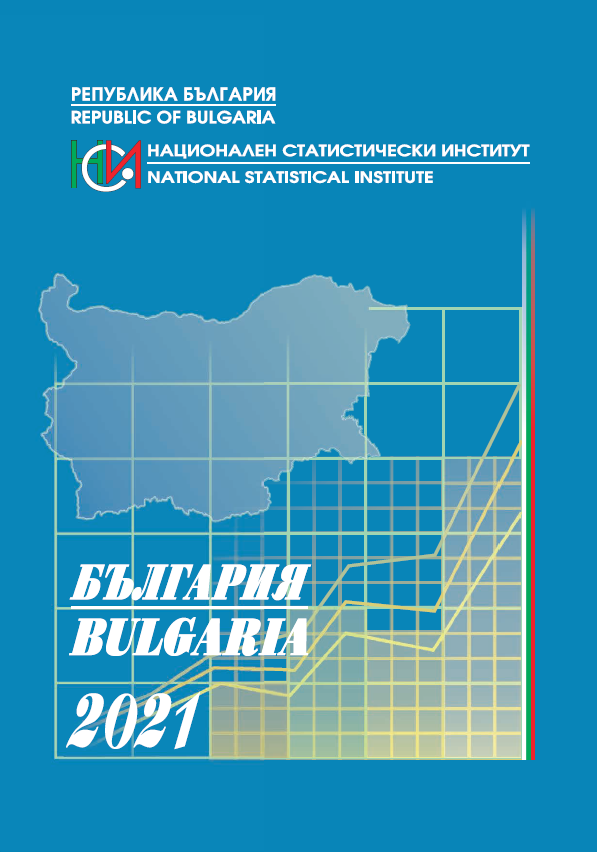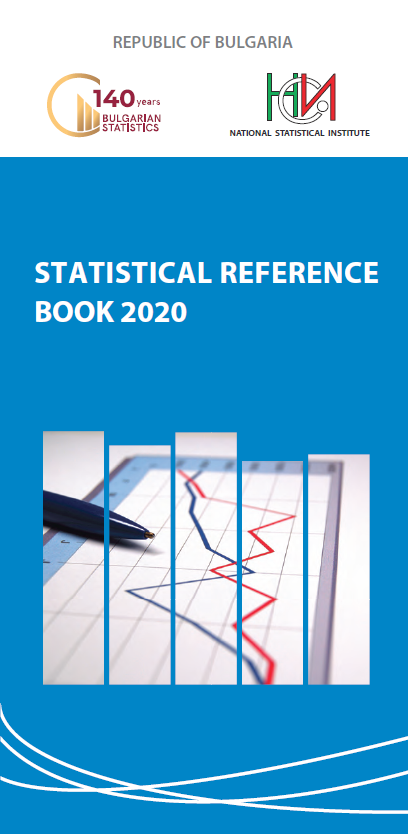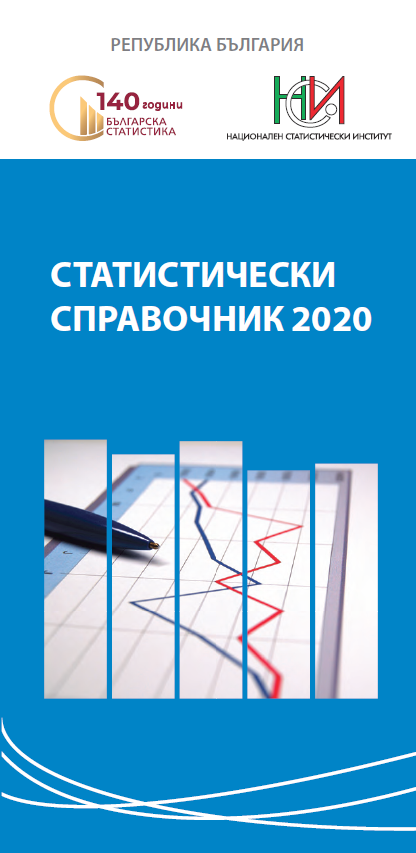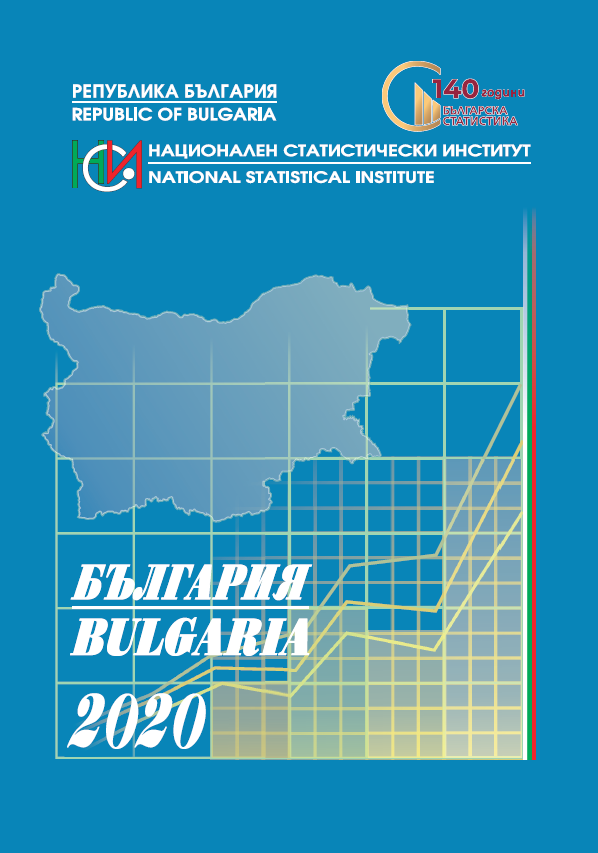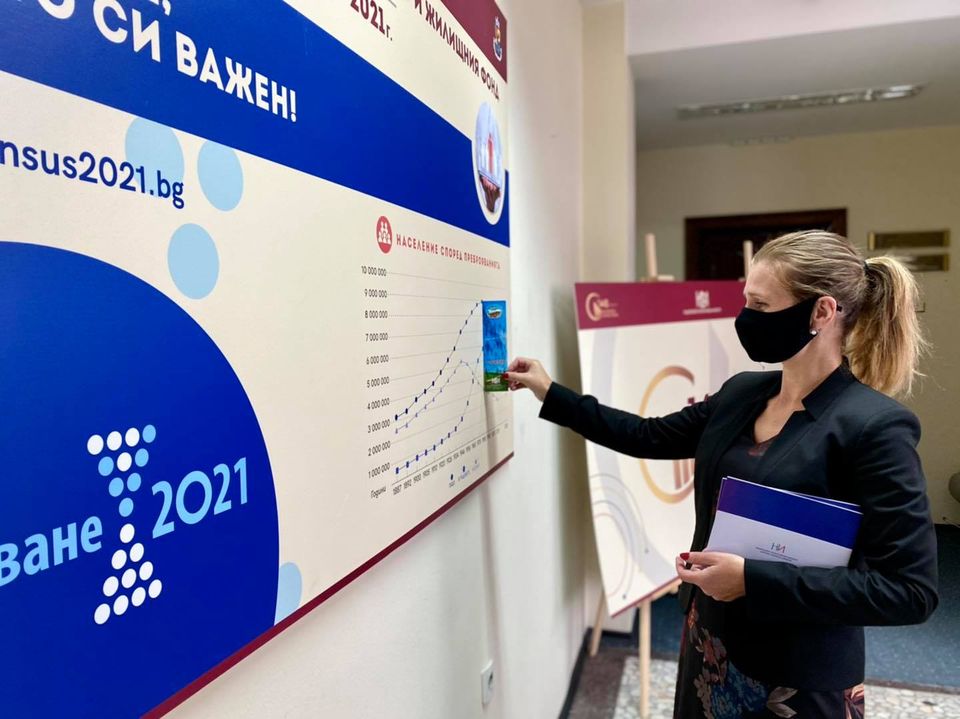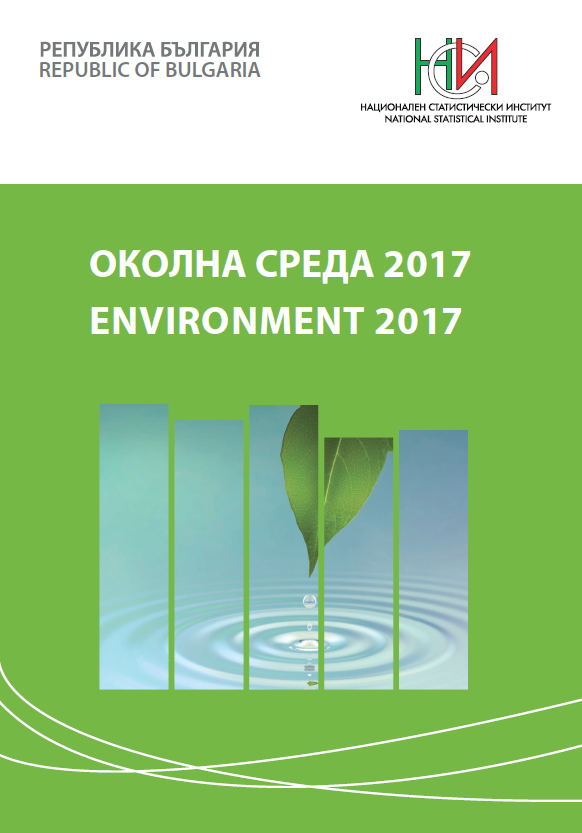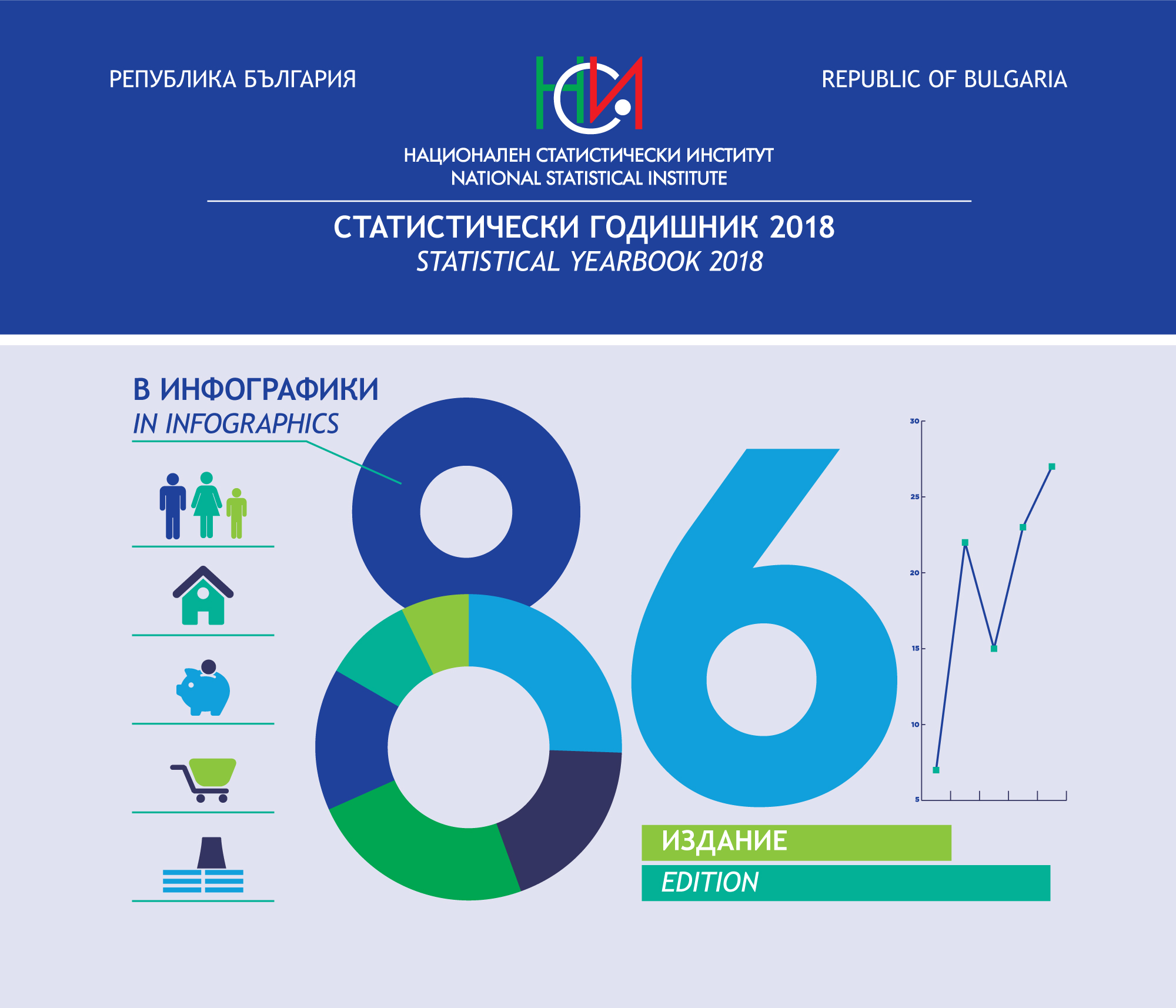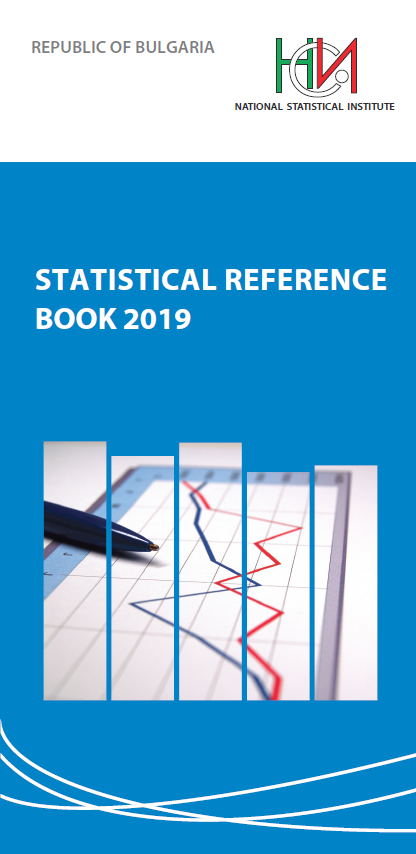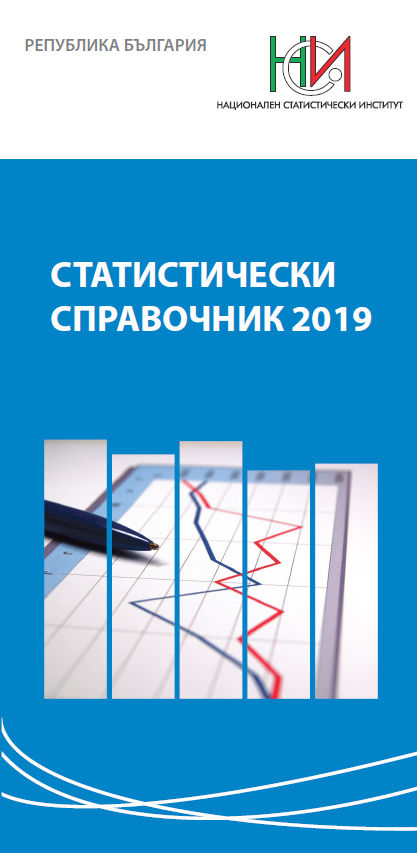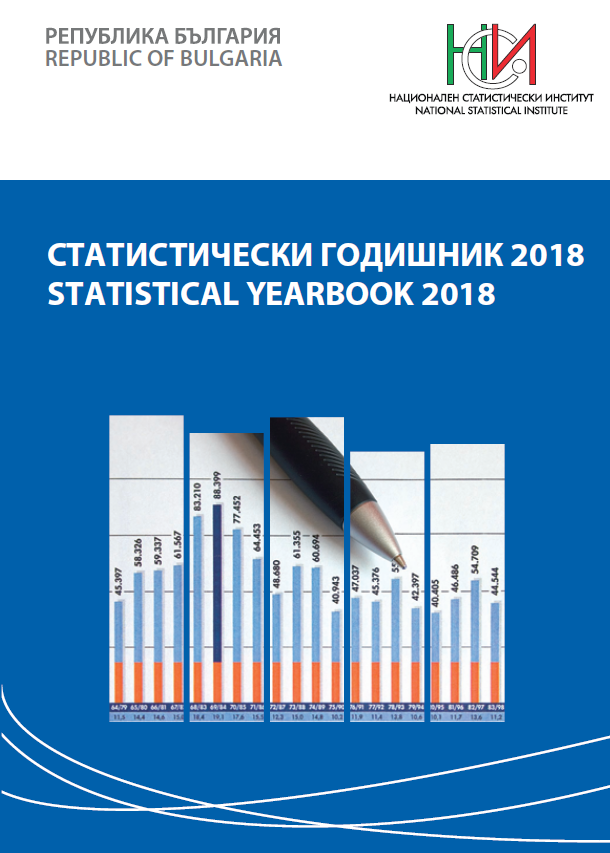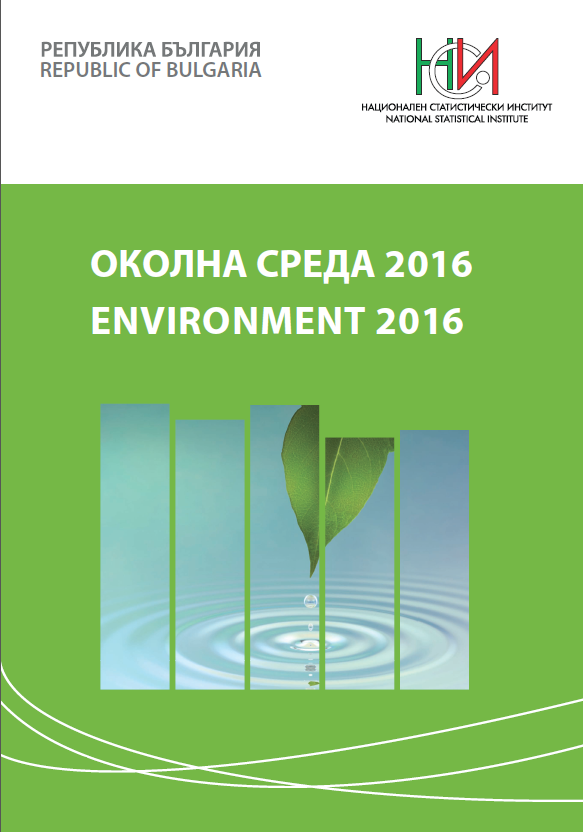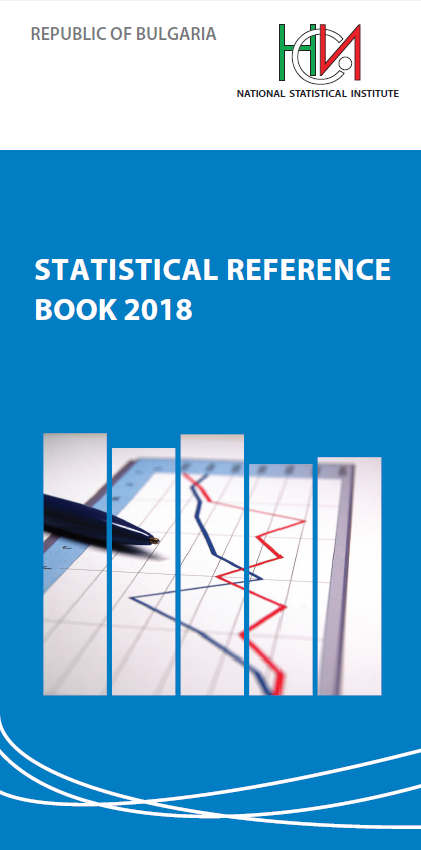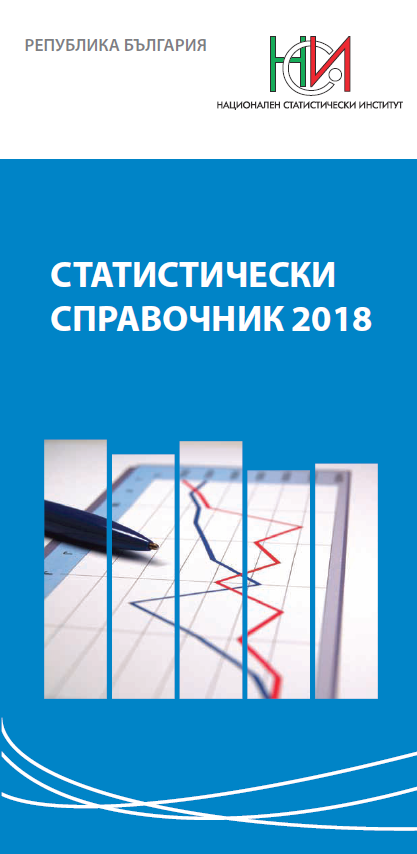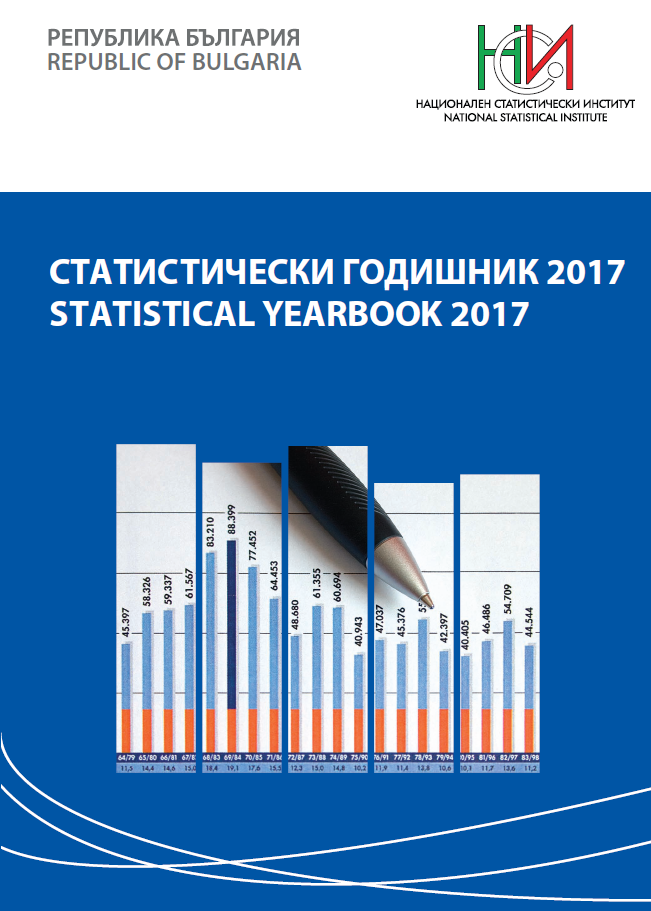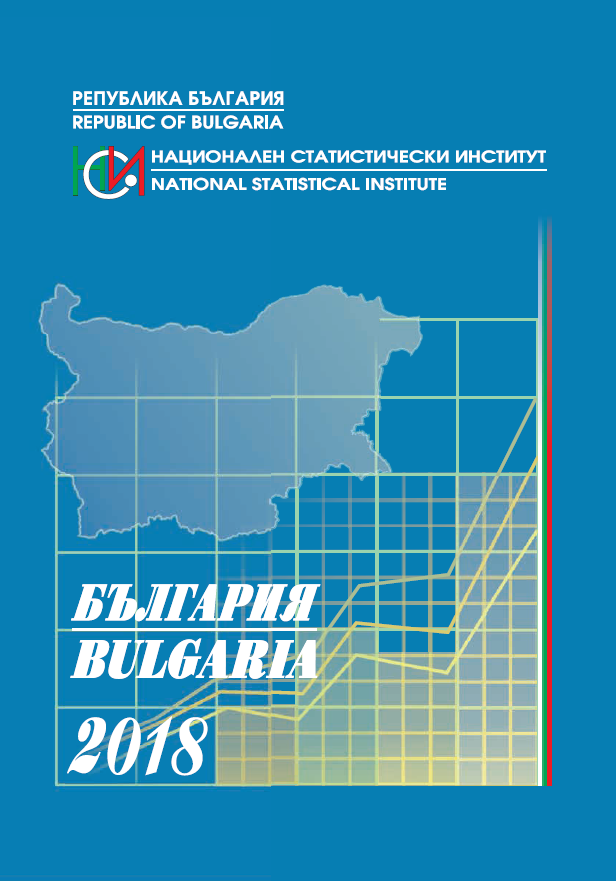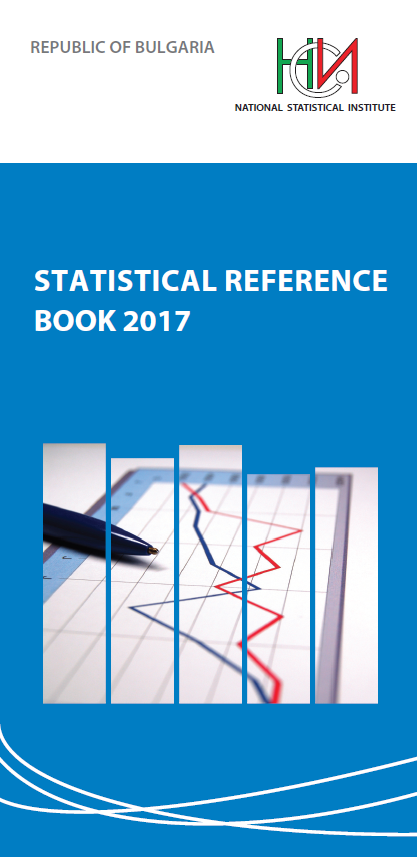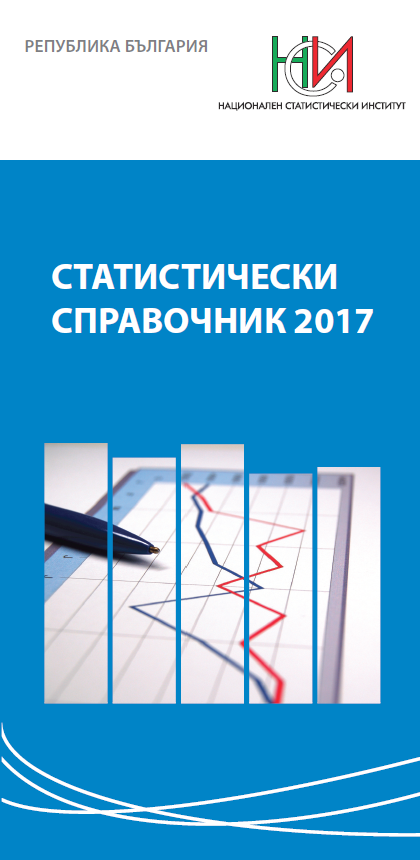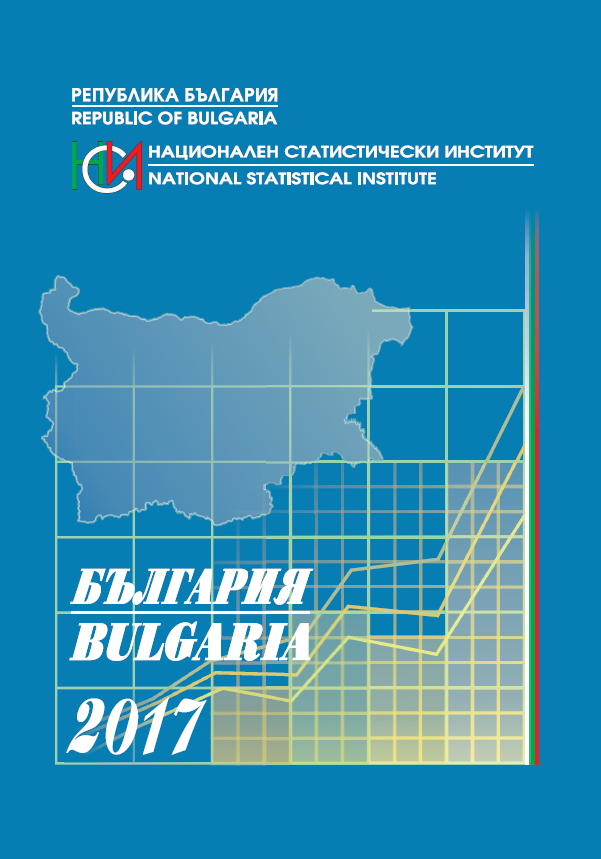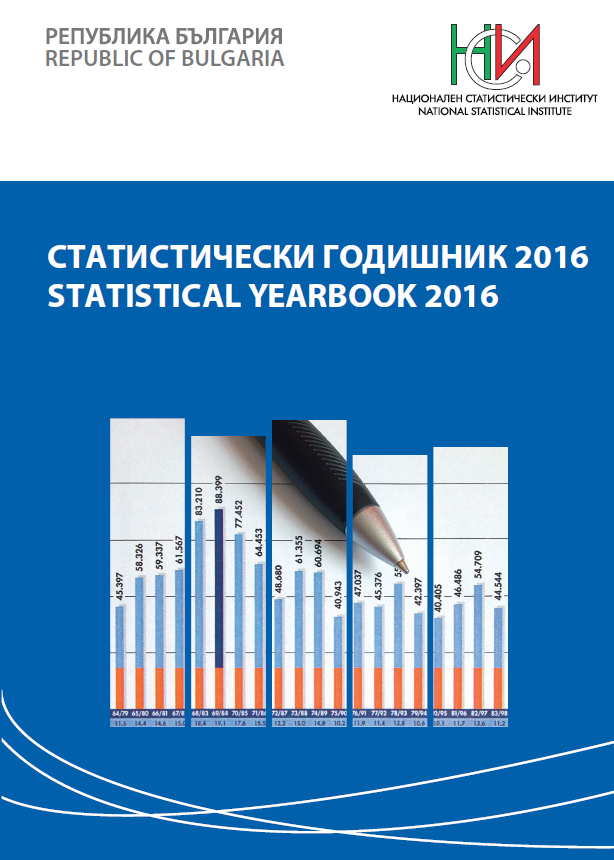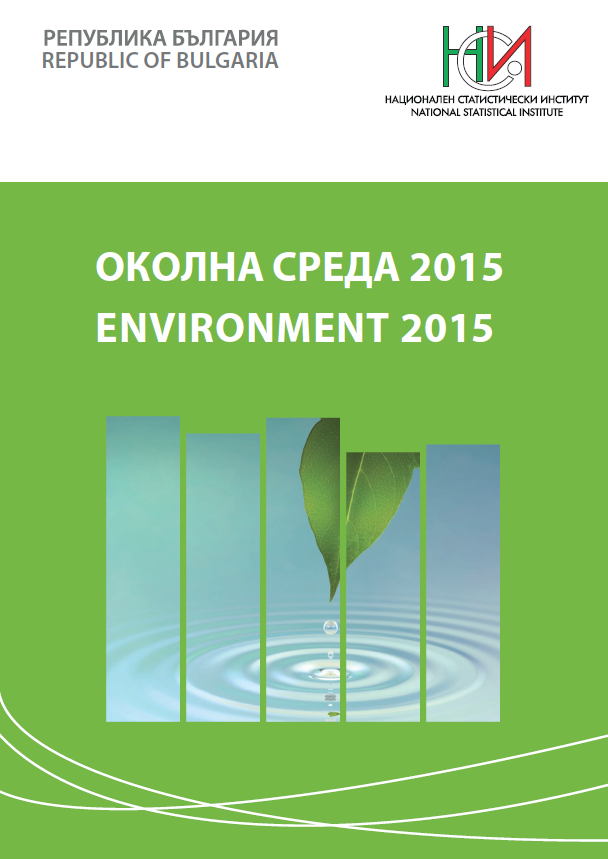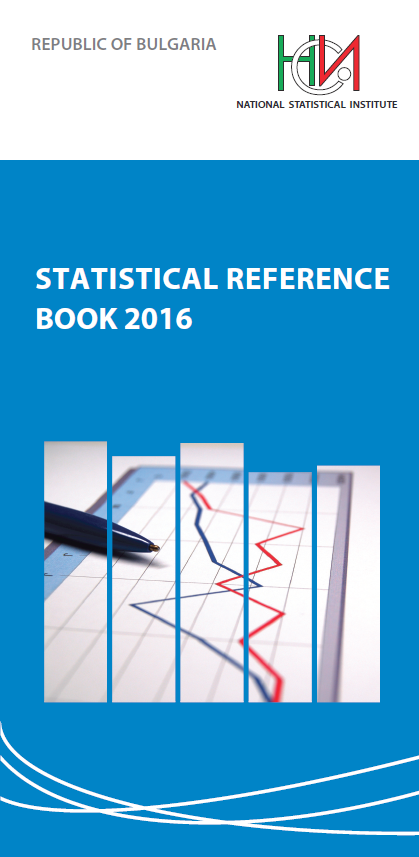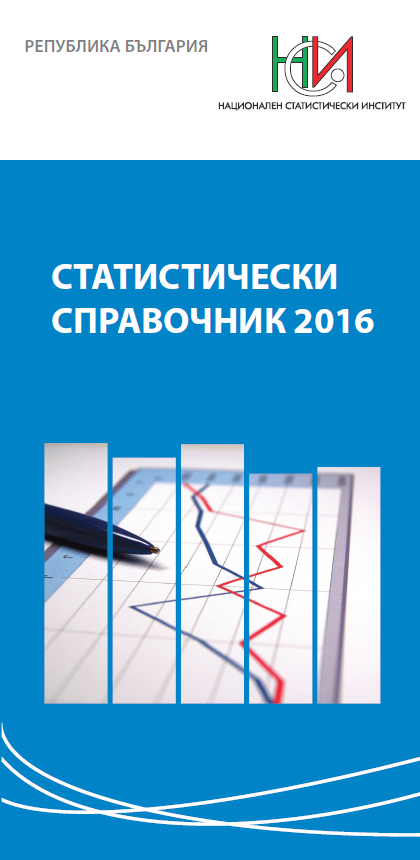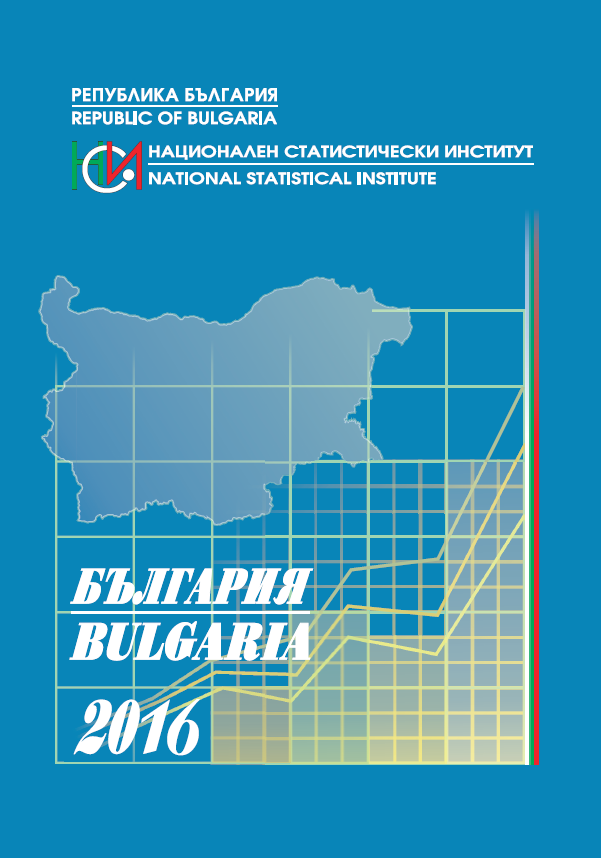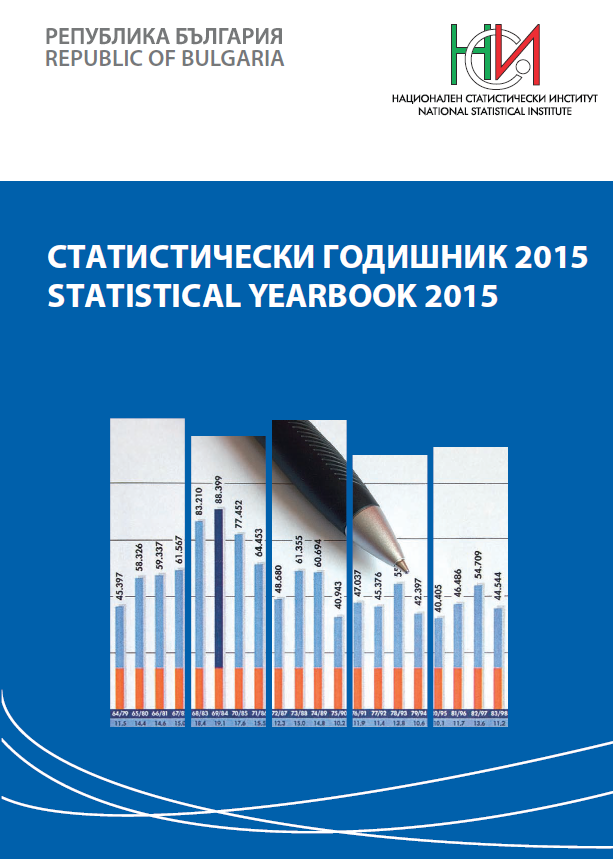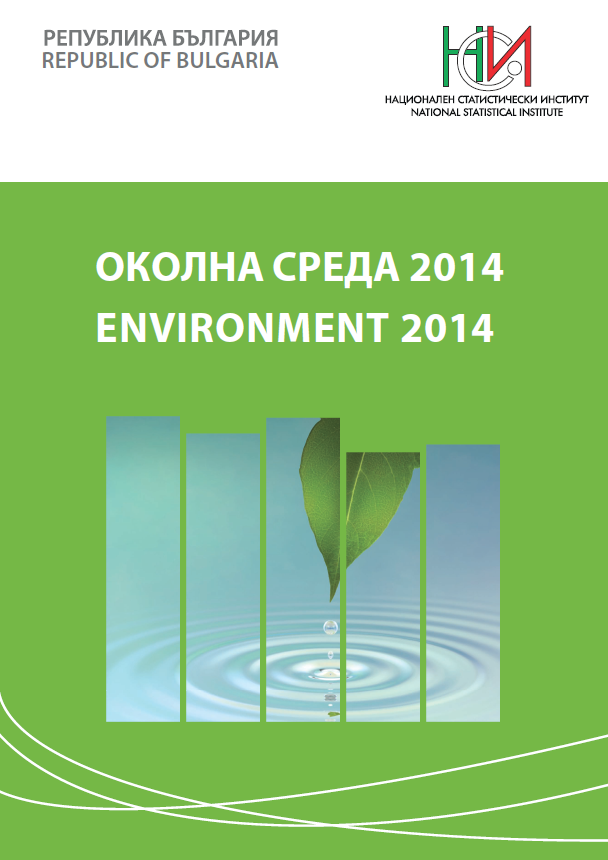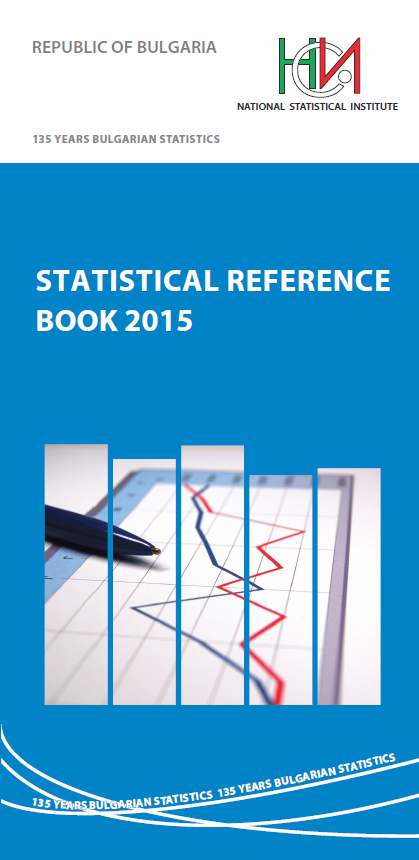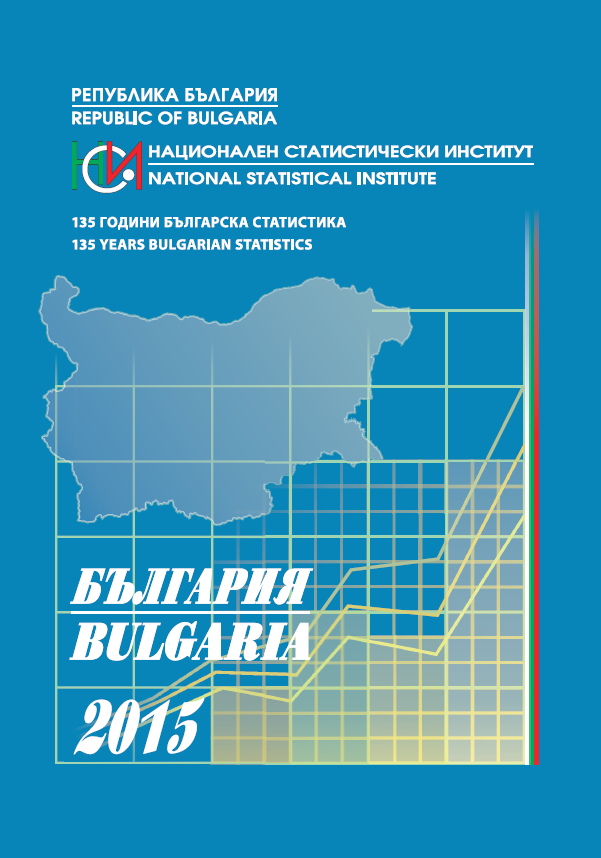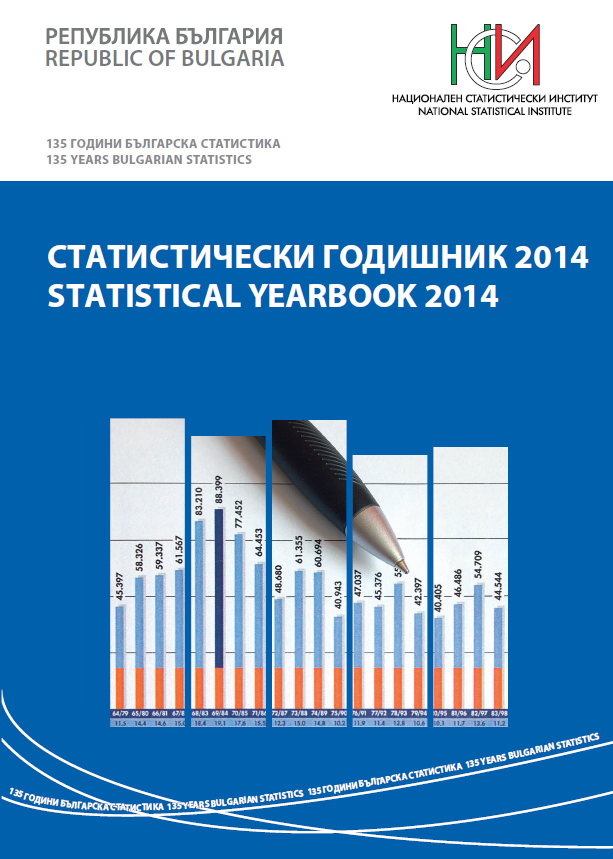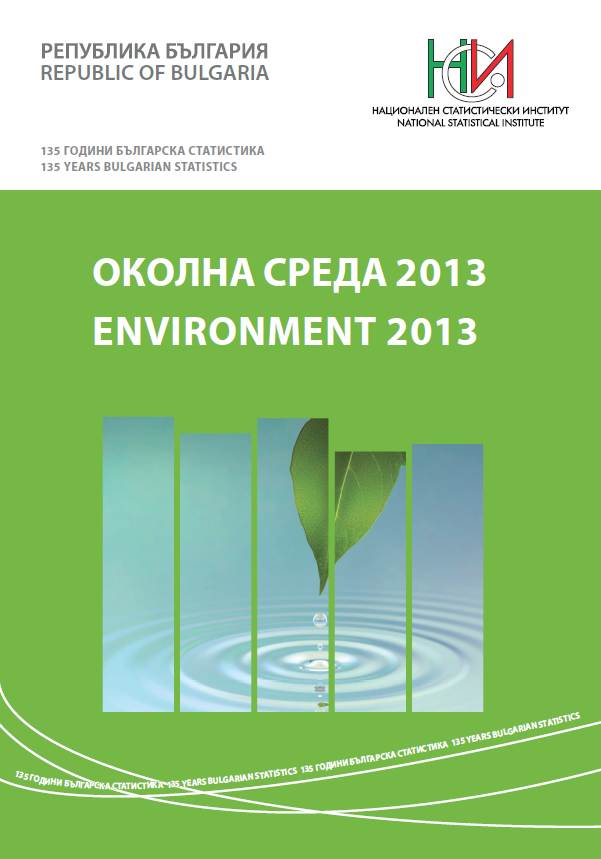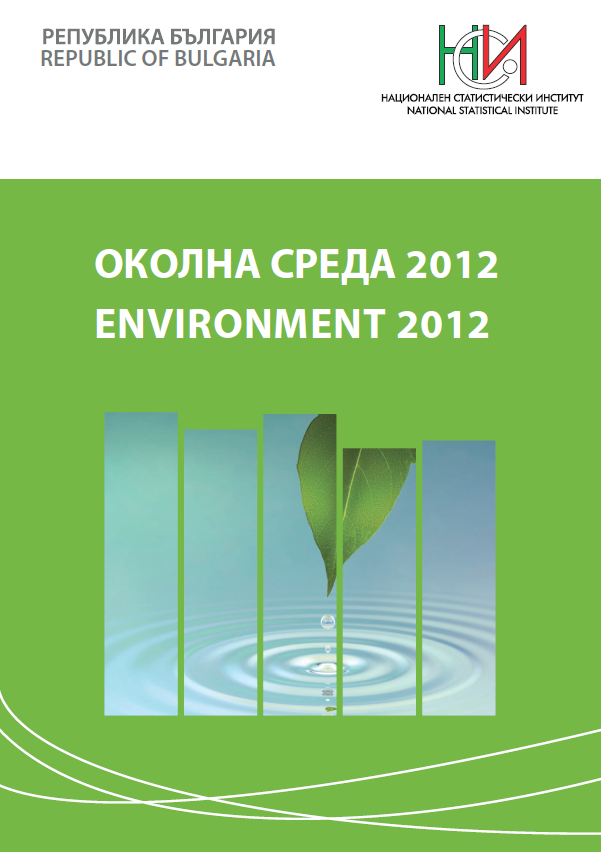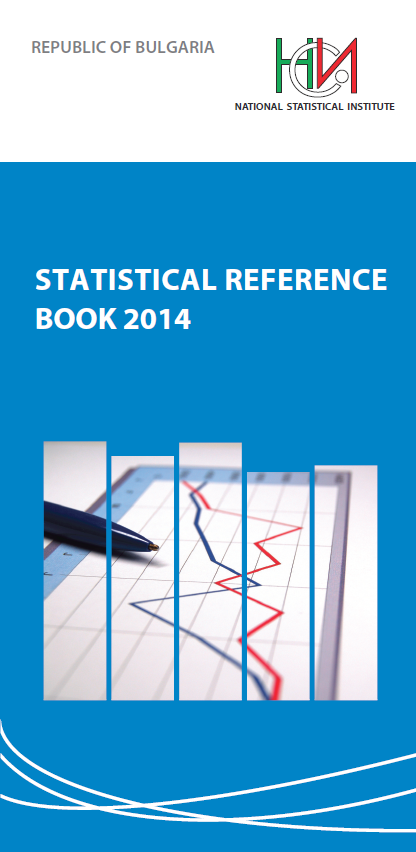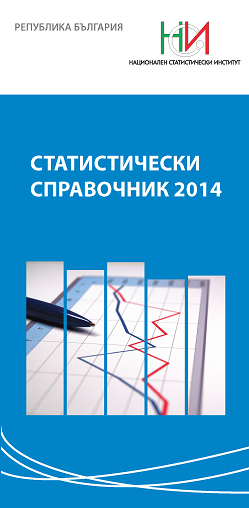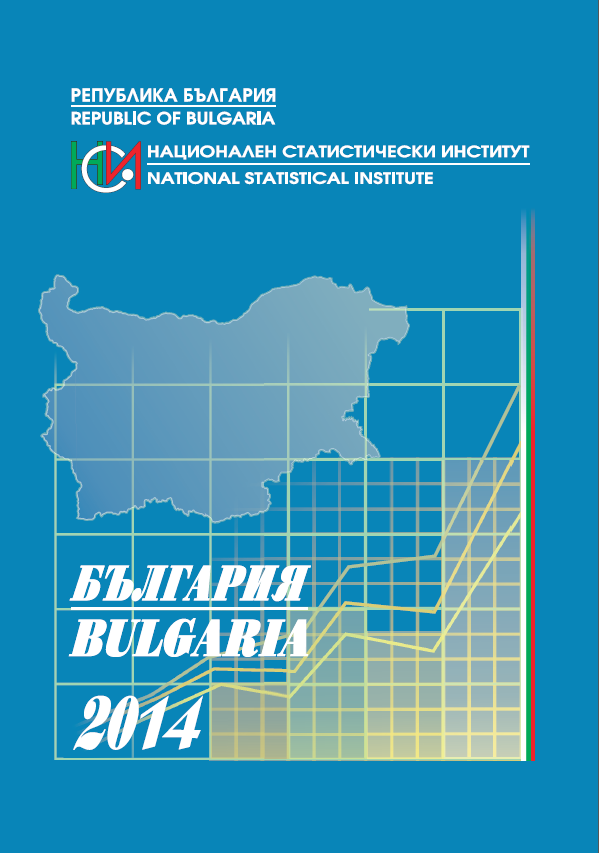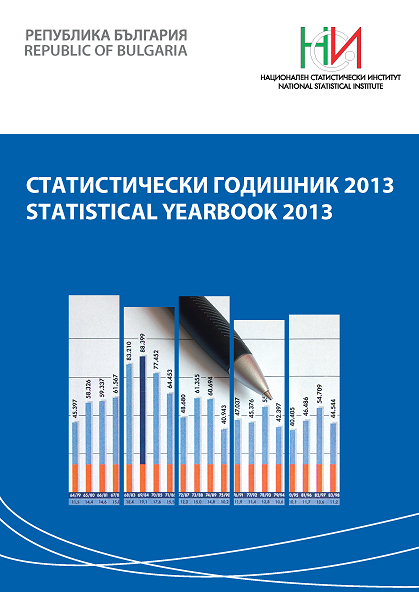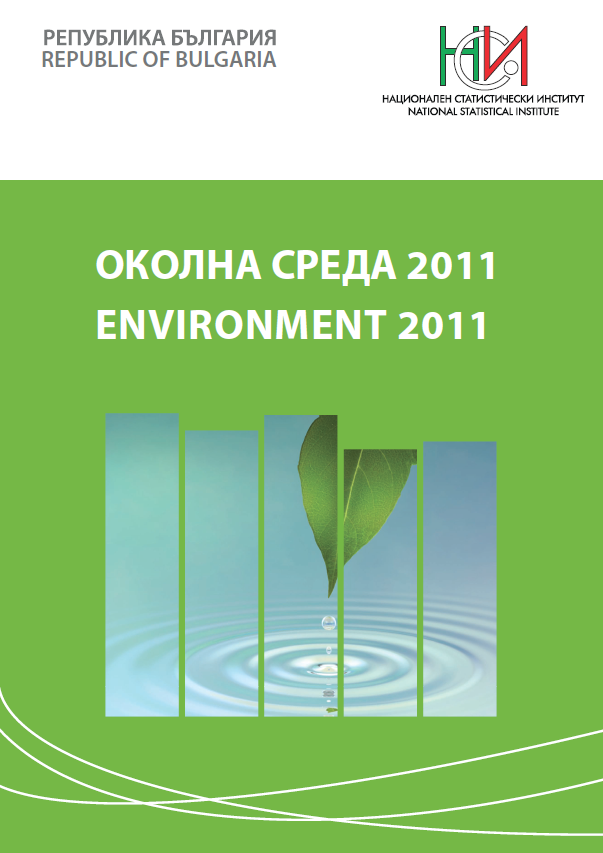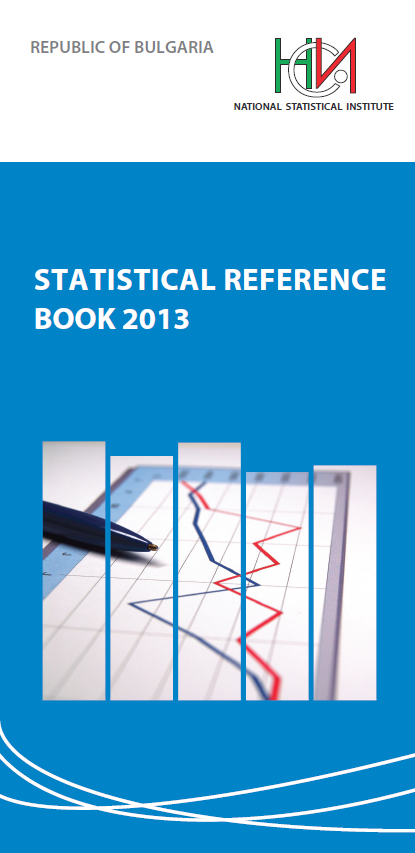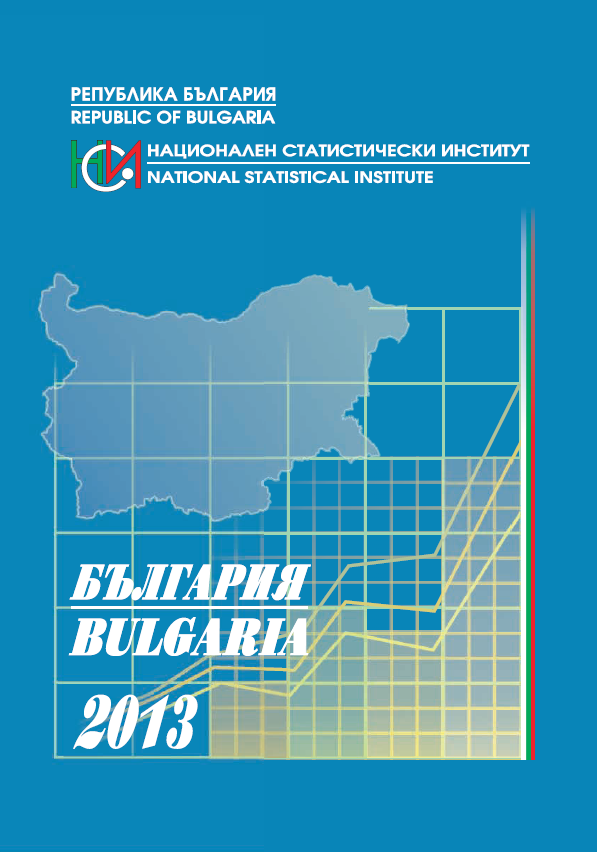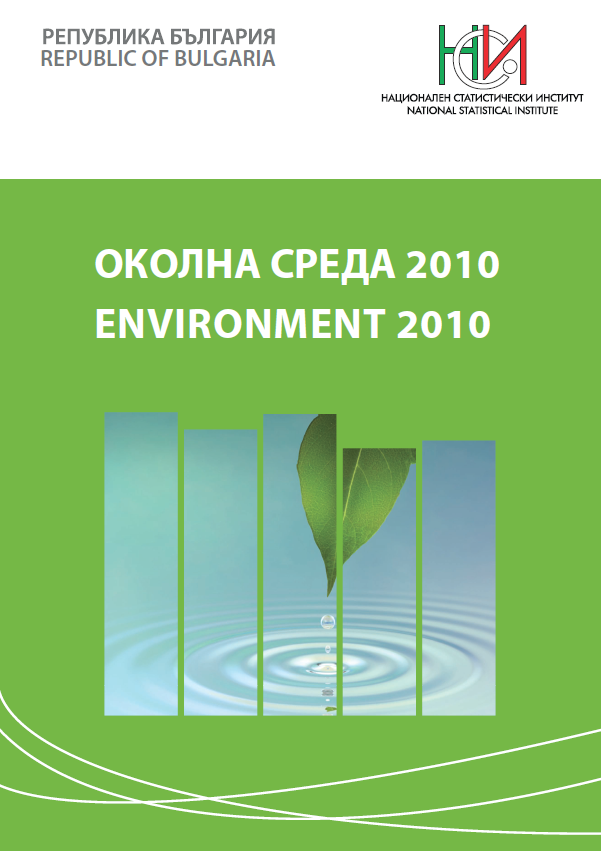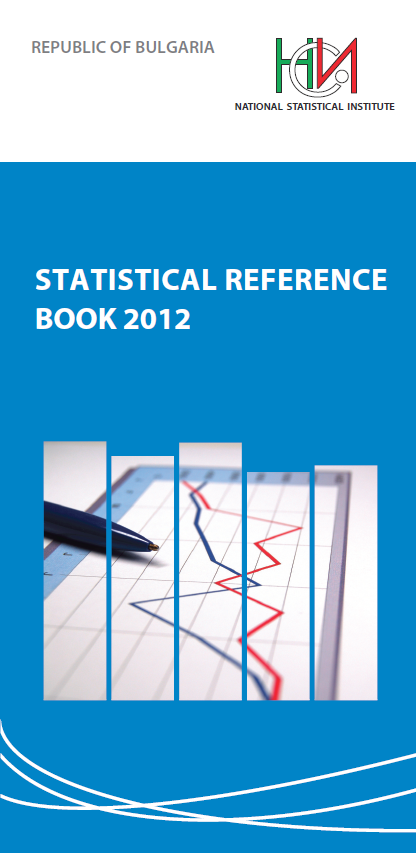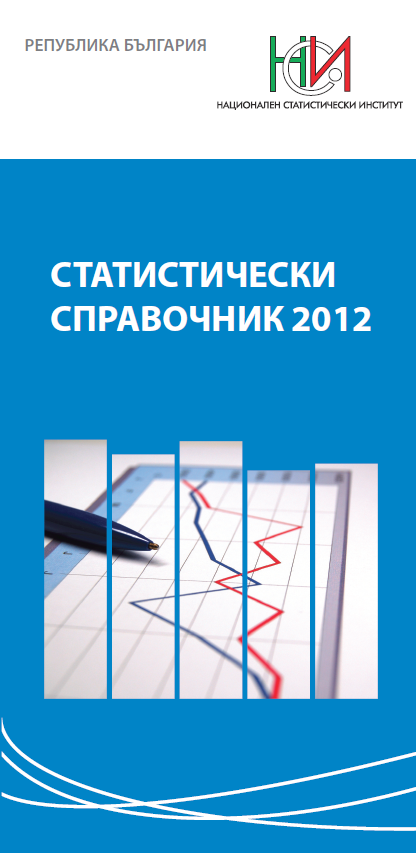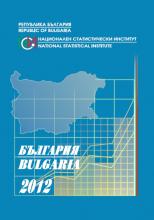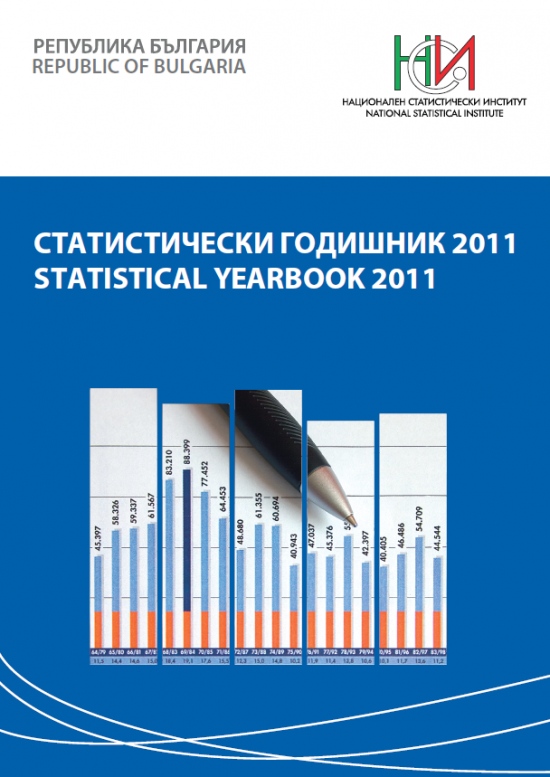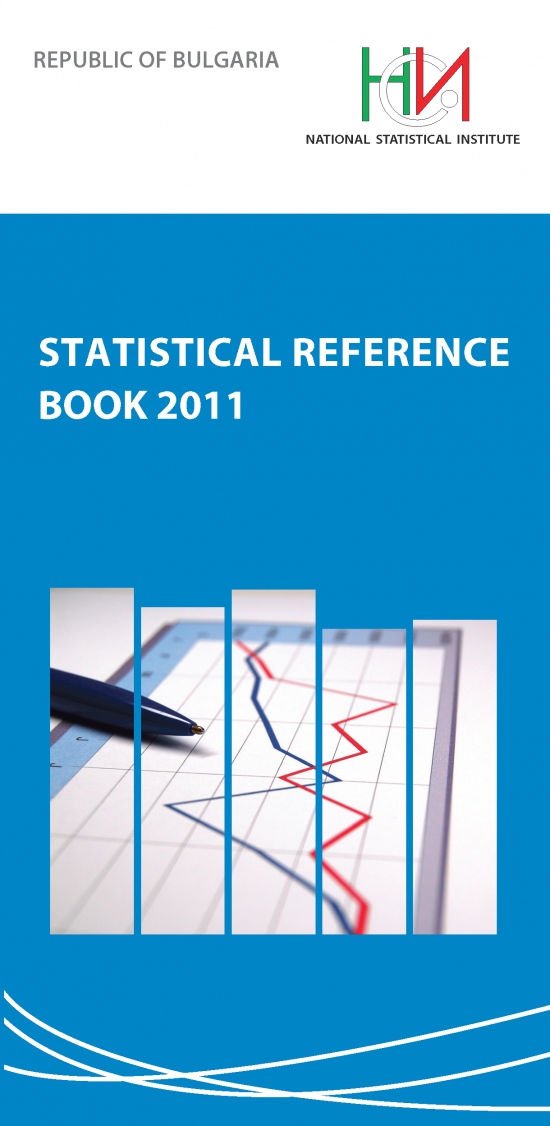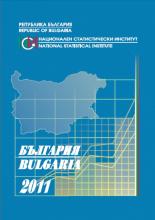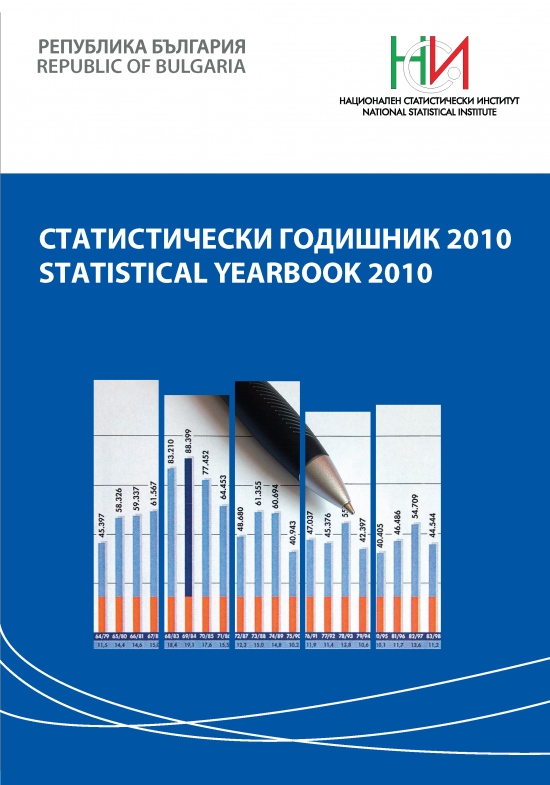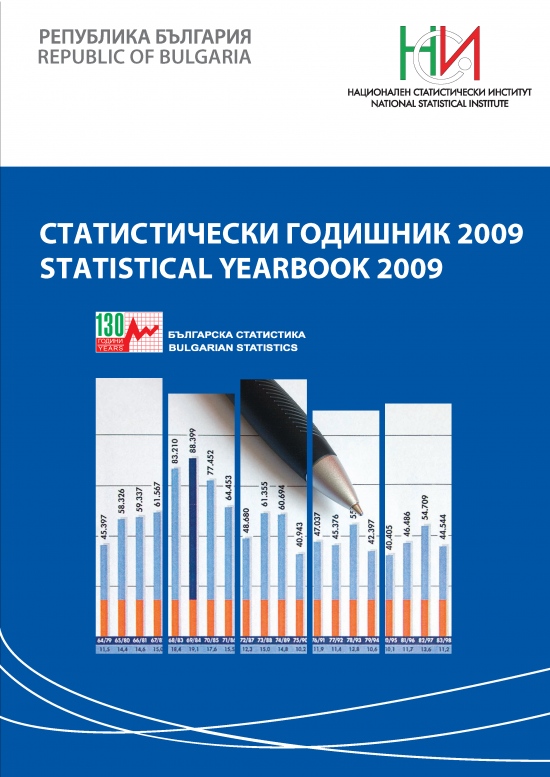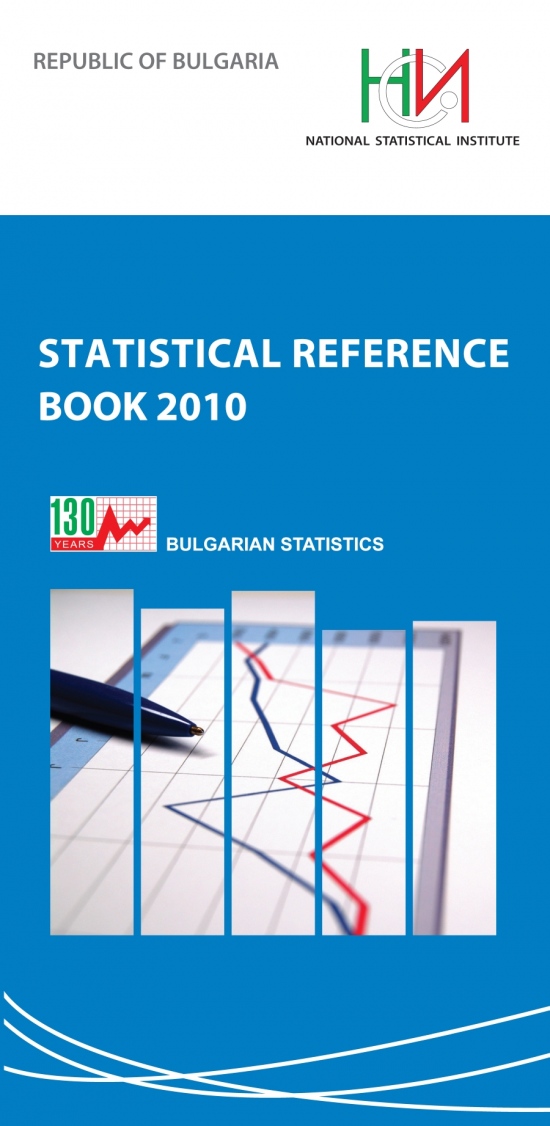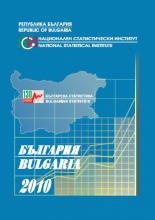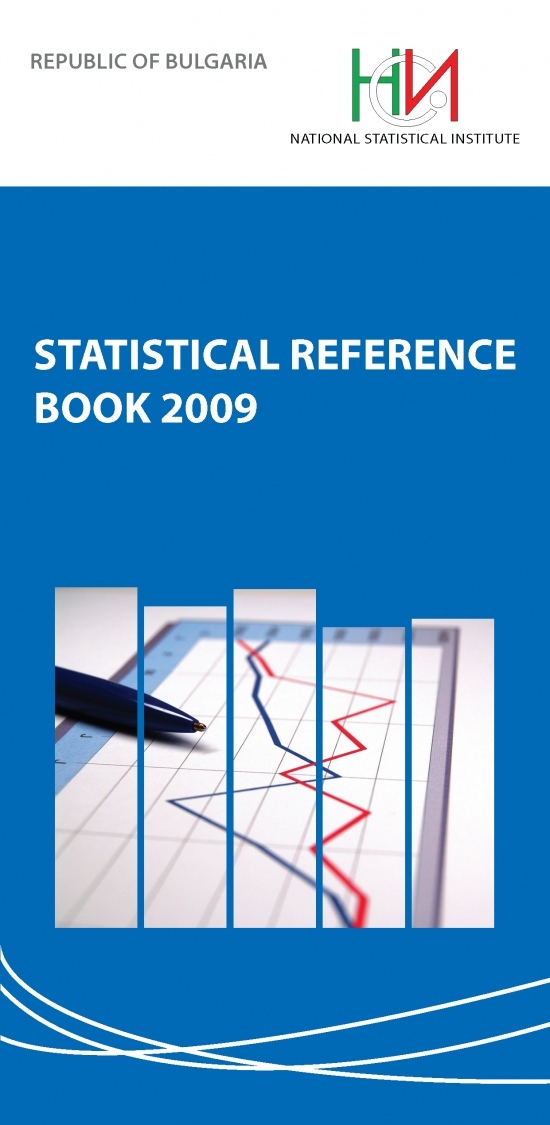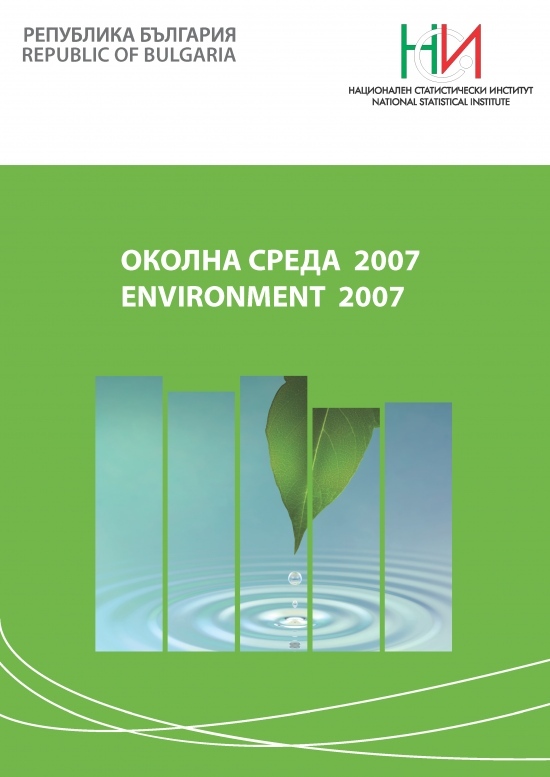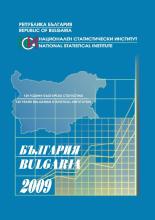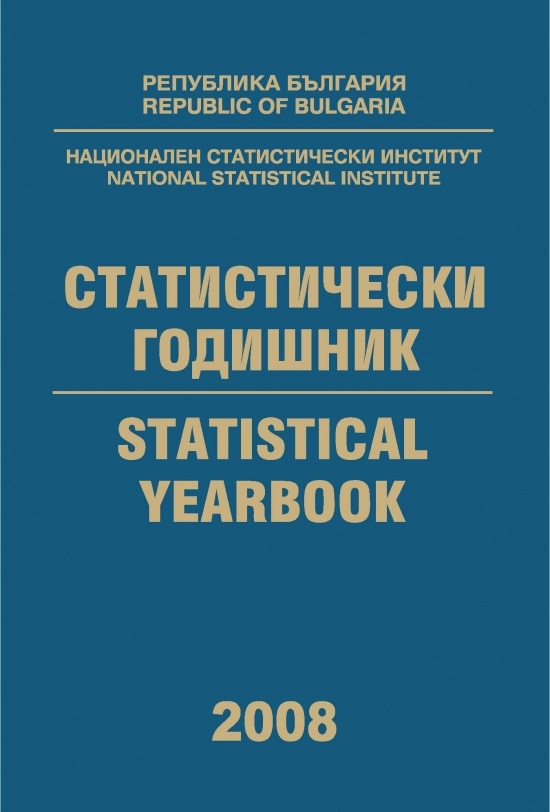Municipal waste by statistical region and district
Euro-SDMX Metadata Structure (ESMS)
| Contact | |
|---|---|
| Contact organisation | National Statistical Institute |
| Contact organisation unit | "Environmental and Energy Statistics" Department |
| Contact name | |
| Contact person function | Chief expert |
| Contact mail address | 2 Panayot Volov St., 1038 Sofia |
| Contact email address | |
| Contact phone number | +359 2 9857 536 |
| Contact fax number | Not available |
| Metadata update | |
| Metadata last certified | 17 February 2025 |
| Metadata last posted | 17 February 2025 |
| Metadata last update | 17 February 2025 |
| Statistical presentation | |
| Data description | The data for municipal waste include: quantities of generated municipal waste, delivered for landfilliling - direct disposal, delivered for preliminary treatment and delivered for recycling municipal waste, generated municipal waste per capita, share of population and number of settlements served by municipal waste collection system, the number, area and capacity of landfill sites and installation for treatment of municipal waste. The data is result of statistical survey “Municipal waste”, conducted by NSI, data from the demographic statistics for the annual number of the population and administrative date of Environmental Agency. The data from municipal waste is for the country and for the statistical region and districts |
| Classification system |
|
| Sector coverage | The statistical survey covers the municipalities on the territory of Bulgaria (265 in total) responsible for the management and collection of municipal waste on their territory. |
| Statistical concepts and definitions | “Municipal waste” are:
a) Mixed or separate collected municipal waste from household including paper and cardboard, glass, metals, plastics, bio-waste, wood, textiles, packaging, waste from electrical and electronic equipment, waste from batteries and accumulators, as well as bulky waste, including mattresses and furniture;
b) mixed waste or separately collected waste from other sources, where such waste is similar in nature and composition to municipal waste Municipal waste does not include waste from production, agriculture, forestry, fishing, septic tanks and sewage network and treatment, including sewage sludge, end-of-life motor vehicles or construction and demolition waste. Generated municipal waste" is a summary indicator that characterizes the level of municipal waste. It is calculated as the sum of: (1) the quantities of municipal waste collected through organized waste collection systems, (2) the quantities of municipal waste collected through systems other than organized waste collection (primarily recyclable materials, such as metal, paper, plastic, and others, which are collected at specialized sites for the purpose and subsequently transferred directly for recycling), and (3) a statistical assessment of the waste generated by the population not covered by organized waste collection systems. The calculation approach is standard and applies to all districts in the country. The municipal waste delivered for preliminary treatment, recycling and direct disposal are the waste at the entrance of the respective installation for treatment of municipal waste. To avoid re-counting the amount of waste - directly disposed municipal waste does not include waste submitted for disposal after pre-treatment. "Municipal waste generated per person (municipal waste accumulation rate)" is the amount of municipal waste generated at national level divided by the average annual population for the relevant year. Definitions are used in accordance with the applicable legislation - Waste Framework Directive (Directive 2008/98/EC) and Directive (EU) 2018/851 amending Directive 2008/98/EC on waste. |
| Statistical unit | The statistical unit is municipality. |
| Statistical population | All municipalities in the country. |
| Reference area | General for the country and by territorial levels - statistical districts and regions. |
| Time coverage | 1999-2023 |
| Base period | Not applicable. |
| Unit of measure | |
| |
| Reference period | |
Calendar year | |
| Institutional mandate | |
| Legal acts and other agreements | Legal Framework
Agreements:
|
| Data sharing | The data are provided annually to the Executive Environment Agency the for the preparation and reporting of the National Inventories of Emissions of Harmful Substances, under the Convention on long-range transboundary air pollution and the United Nations Framework Convention on Climate Change. The data are used for reporting to Eurostat, under Regulation (EC) No 2150/2002 on waste statistics. |
| Confidentiality | |
| Confidentiality - policy | Regulation (EC) No 223/2009 on European statistics foresees the need to establish common principles and guidelines ensuring the confidentiality of data used for the production of European statistics and access to such confidential data, with due regard to technical developments and the requirements of users in a democratic society. The Statistics Act (Art. 25, para. 1) stipulates that individual data received and collected in statistical surveys are statistical secret and may be used only for statistical purposes. |
| Confidentiality - data treatment | According to Art. 25 of the Statistics Act, individual data shall not be disclosed or provided. The provision of individual data is possible only according to Art. 26 of the Statistics Act. |
| Release policy | |
| Release calendar | The date for publication of the statistical information is indicated in the Release calendar of result of statistical surveys by NSI. |
| Release calendar access | The calendar is available in website of NSI here. |
| User access | The data on municipal waste are published on the NSI website in the "Statistical data - Environment" section in accordance with the Statistics Act and the European Statistical Code of Practice, respecting professional independence and aiming at objectivity and transparency, where all users are equal. |
| Frequency of dissemination | |
Annually | |
| Accessibility and clarity | |
| News release | Regular press release on the NSI’s website. |
| Publications |
|
| On-line database | The data on municipal waste are available on the NSI’s website: |
| Micro-data access | Individual anonymized data may be provided for scientific and research purposes according the Rules for Provision of Anonymised Individual Data for Scientific and Research Purposes of the NSI. |
| Other | Information services at the request of users according Rules for Dissemination of Statistical Products and Services of the NSI. |
| Documentation on methodology |
|
| Quality documentation |
The quality report is published annually with the publication of statistical data |
| Quality management | |
| Quality assurance | Data quality is ensured by applying the principles of the European Statistics Code of Practice and the National statistical system’s Common Framework for Quality Management, including with application of the internal methodology "Environmental Statistics and Accounts”, developed by the NSI. The assessment of the statistical data quality is carried out in order to ensure compliance with the requirements of the Statistics Act in terms of quality criteria: adequacy, accuracy, timeliness, punctuality, accessibility and clarity, comparability and logical consistency. In this way, the application of the following principles of the European Statistics Code Practice is guaranteed: appropriate statistical procedures; non-excessive respondents’ burden; cost-effectiveness; relevance; accuracy; timeliness and punctuality; comparability and coherence; accessibility and clarity, etc. |
| Quality assessment | The quality assessment is carried out for every stage of statistical production process in accordance with NSS Common Framework for Quality Management and the principles of the European Statistics Code of Practice. It’s include statistical process and statistical information. For the quality assessment the requirements of the current methodological documents are applied, including the instructions in the internal methodology "Environmental Statistics and Accounts”, developed by the NSI. To ensure high quality of the data, their consistency with administrative data of the Executive Environment Agency is checked. In order to ensure data quality, work is also being done to continuously improve the online-based information system for the collecting of primary data, providing the possibility of arithmetic and logical control of input data and performing additional analyses and checks. |
| Relevance | |
| User needs | The main users of statistical information from the survey are state and municipal structures, scientific institutes, associations and citizens. |
| User satisfaction | NSI conducts a regular statistical survey "User Satisfaction with the Statistical Information Products and Services Provided", which covers all statistical areas. It aims to assess user satisfaction with the statistical information provided by the NSI and to define recommendations for the future development of the statistical system in accordance with user needs. |
| Completeness | The data meet the requirements of applicable legislation in terms of scope and monitored indicators. |
| Accuracy and reliability | |
| Overall accuracy | Data accuracy, as one of the criteria for the quality of statistical information, according to the Statistics Act, is guaranteed through quality assurance activities within the statistical production process. |
| Sampling error | Not applicable. |
| Non-sampling error | Not applicable. |
| Timeliness and punctuality | |
| Timeliness | The data are published 14 months after the reporting year. |
| Punctuality | The data are published according to the deadlines in the Release calendar of result of statistical surveys by NSI. |
| Coherence and comparability | |
| Comparability - geographical | The data are comparable at the district, regional, and zone levels. Given the application of common definitions and classifications, the data are comparable at the national level with other EU countries. |
| Comparability - over time | The data are comparable over time. Time series are available from 1999. |
| Coherence - cross domain | The data are coherence with data from Demographic Statistics for population by settlements Classification is applied according to Classification of territorial units for statistics in Bulgaria (NUTS) |
| Coherence - internal | The data have a high degree of internal coherence. The quality assessment procedure checks the consistency of the primary and statistical data by waste code, the aggregated and detailed data. |
| Cost and burden | |
The costs (budget) for statistical surveys are disclosed in the National Statistical Program, published on the NSI website. Reducing the burden on respondents is a priority in conducting statistical surveys. In this regard, actions are being taken to alleviate the burden, for example: collecting and checking primary data through the online-based information system "Environmental Statistics", containing strict arithmetic and logical controls; improving the instructions for filling of the survey forms; providing methodological and technical assistance; continuously exploring the possibilities for using information from administrative and other sources; conducting annual training for respondents and NSI’s experts, etc. The time needed to fill in the statistical forms is used as the main measure of the burden on respondents. For this purpose, a section is included in each form that respondents must fill in, regarding the time needed to fill in the form (including the time for data preparation). Based on this information and given the specifics of the study, the burden of the respondents can be determined as relatively high. The overall burden of the responsible experts is determined as high, especially in cases of revisions of data from previous reporting periods. | |
| Data revision | |
| Data revision - policy | In accordance with the principles of the European Statistics Code of Practice, Integrated system management in NSI and the requirements of the internal rules, data are regularly monitored and revised as necessary. Revisions are carried out according to standard, established and transparent procedures and are regularly analysed with the aim of improving data sources, statistical processes and products. |
| Data revision - practice | The data is revised upon change in regulatory requirements, the applied methodology, or when necessary. |
| Statistical processing | |
| Source data |
|
| Frequency of data collection | Annually |
| Data collection | Data is collected from municipalities across the country on:
|
| Data validation | Data validation is part of the activities to ensure the quality of statistical information. Primary data are validated in terms of completeness, correct classification, units of measurement, comparability with previous years, comparability with data from other statistical areas and/or administrative sources, logical control, etc. Statistical data are validated in terms of their comparability, accuracy, reliability, etc., in accordance with the quality criteria according to the Statistics Act. |
| Data compilation | Data processing is carried out by strictly applying the methodology of the study and the data verification methods. Data processing includes the actions by which, based on the primary data, brought into an appropriate form, statistical data are calculated, using specialized software products for this purpose. |
| Adjustment | Not applicable. |
| Comment | |
ESS Standard for Quality Reports Structure (ESQRS)
| Contact | |
|---|---|
| Contact organisation | National Statistical Institute |
| Contact organisation unit | "Environmental and Energy Statistics" Department |
| Contact name | |
| Contact person function | Chief expert |
| Contact mail address | 2 Panayot Volov St., 1038 Sofia |
| Contact email address | |
| Contact phone number | +359 2 9857 536 |
| Contact fax number | Not available |
| Statistical presentation | |
| Data description | The data for municipal waste include: quantities of generated municipal waste, delivered for landfilliling - direct disposal, delivered for preliminary treatment and delivered for recycling municipal waste, generated municipal waste per capita, share of population and number of settlements served by municipal waste collection system, the number, area and capacity of landfill sites and installation for treatment of municipal waste. The data is result of statistical survey “Municipal waste”, conducted by NSI, data from the demographic statistics for the annual number of the population and administrative date of Environmental Agency. The data from municipal waste is for the country and for the statistical region and districts |
| Classification system |
|
| Sector coverage | The statistical survey covers the municipalities on the territory of Bulgaria (265 in total) responsible for the management and collection of municipal waste on their territory. |
| Statistical concepts and definitions | “Municipal waste” are:
a) Mixed or separate collected municipal waste from household including paper and cardboard, glass, metals, plastics, bio-waste, wood, textiles, packaging, waste from electrical and electronic equipment, waste from batteries and accumulators, as well as bulky waste, including mattresses and furniture;
b) mixed waste or separately collected waste from other sources, where such waste is similar in nature and composition to municipal waste Municipal waste does not include waste from production, agriculture, forestry, fishing, septic tanks and sewage network and treatment, including sewage sludge, end-of-life motor vehicles or construction and demolition waste. Generated municipal waste" is a summary indicator that characterizes the level of municipal waste. It is calculated as the sum of: (1) the quantities of municipal waste collected through organized waste collection systems, (2) the quantities of municipal waste collected through systems other than organized waste collection (primarily recyclable materials, such as metal, paper, plastic, and others, which are collected at specialized sites for the purpose and subsequently transferred directly for recycling), and (3) a statistical assessment of the waste generated by the population not covered by organized waste collection systems. The calculation approach is standard and applies to all districts in the country. The municipal waste delivered for preliminary treatment, recycling and direct disposal are the waste at the entrance of the respective installation for treatment of municipal waste. To avoid re-counting the amount of waste - directly disposed municipal waste does not include waste submitted for disposal after pre-treatment. "Municipal waste generated per person (municipal waste accumulation rate)" is the amount of municipal waste generated at national level divided by the average annual population for the relevant year. Definitions are used in accordance with the applicable legislation - Waste Framework Directive (Directive 2008/98/EC) and Directive (EU) 2018/851 amending Directive 2008/98/EC on waste. |
| Statistical unit | The statistical unit is municipality. |
| Statistical population | All municipalities in the country. |
| Reference area | General for the country and by territorial levels - statistical districts and regions. |
| Time coverage | 1999-2023 |
| Base period | Not applicable. |
| Statistical processing | |
| Source data |
|
| Frequency of data collection | Annually |
| Data collection | Data is collected from municipalities across the country on:
|
| Data validation | Data validation is part of the activities to ensure the quality of statistical information. Primary data are validated in terms of completeness, correct classification, units of measurement, comparability with previous years, comparability with data from other statistical areas and/or administrative sources, logical control, etc. Statistical data are validated in terms of their comparability, accuracy, reliability, etc., in accordance with the quality criteria according to the Statistics Act. |
| Data compilation | Data processing is carried out by strictly applying the methodology of the study and the data verification methods. Data processing includes the actions by which, based on the primary data, brought into an appropriate form, statistical data are calculated, using specialized software products for this purpose. |
| Adjustment | Not applicable. |
| Quality management | |
| Quality assurance | Data quality is ensured by applying the principles of the European Statistics Code of Practice and the National statistical system’s Common Framework for Quality Management, including with application of the internal methodology "Environmental Statistics and Accounts”, developed by the NSI. The assessment of the statistical data quality is carried out in order to ensure compliance with the requirements of the Statistics Act in terms of quality criteria: adequacy, accuracy, timeliness, punctuality, accessibility and clarity, comparability and logical consistency. In this way, the application of the following principles of the European Statistics Code Practice is guaranteed: appropriate statistical procedures; non-excessive respondents’ burden; cost-effectiveness; relevance; accuracy; timeliness and punctuality; comparability and coherence; accessibility and clarity, etc. |
| Quality assessment | The quality assessment is carried out for every stage of statistical production process in accordance with NSS Common Framework for Quality Management and the principles of the European Statistics Code of Practice. It’s include statistical process and statistical information. For the quality assessment the requirements of the current methodological documents are applied, including the instructions in the internal methodology "Environmental Statistics and Accounts”, developed by the NSI. To ensure high quality of the data, their consistency with administrative data of the Executive Environment Agency is checked. In order to ensure data quality, work is also being done to continuously improve the online-based information system for the collecting of primary data, providing the possibility of arithmetic and logical control of input data and performing additional analyses and checks. |
| Relevance | |
| User needs | The main users of statistical information from the survey are state and municipal structures, scientific institutes, associations and citizens. |
| User satisfaction | NSI conducts a regular statistical survey "User Satisfaction with the Statistical Information Products and Services Provided", which covers all statistical areas. It aims to assess user satisfaction with the statistical information provided by the NSI and to define recommendations for the future development of the statistical system in accordance with user needs. |
| Completeness | The data meet the requirements of applicable legislation in terms of scope and monitored indicators. |
| Data completeness - rate | High |
| Accuracy and reliability | |
| Overall accuracy | Data accuracy, as one of the criteria for the quality of statistical information, according to the Statistics Act, is guaranteed through quality assurance activities within the statistical production process. |
| Sampling error | Not applicable. |
| Sampling errors - indicators | Not applicable. |
| Non-sampling error | Not applicable. |
| Coverage error | Not applicable. |
| Over-coverage - rate | Not applicable. |
| Common units - proportion | Not applicable. |
| Measurement error | Not applicable. |
| Non response error | Not applicable. |
| Unit non-response - rate | Not applicable. |
| Item non-response - rate | Not applicable. |
| Processing error | Not applicable. |
| Imputation - rate | Not applicable. |
| Model assumption error | Not applicable. |
| Seasonal adjustment | Not applicable. |
| Data revision - policy | In accordance with the principles of the European Statistics Code of Practice, Integrated system management in NSI and the requirements of the internal rules, data are regularly monitored and revised as necessary. Revisions are carried out according to standard, established and transparent procedures and are regularly analysed with the aim of improving data sources, statistical processes and products. |
| Data revision - practice | The data is revised upon change in regulatory requirements, the applied methodology, or when necessary. |
| Data revision - average size | Not applicable. |
| Timeliness and punctuality | |
| Timeliness | The data are published 14 months after the reporting year. |
| Time lag - first results | Not applicable. |
| Time lag - final results | Not applicable. |
| Punctuality | The data are published according to the deadlines in the Release calendar of result of statistical surveys by NSI. |
| Punctuality - delivery and publication | Not applicable. |
| Coherence and comparability | |
| Comparability - geographical | The data are comparable at the district, regional, and zone levels. Given the application of common definitions and classifications, the data are comparable at the national level with other EU countries. |
| Asymmetry for mirror flows statistics - coefficient | Not applicable. |
| Comparability - over time | The data are comparable over time. Time series are available from 1999. |
| Length of comparable time series | 1999-2023 |
| Coherence - cross domain | The data are coherence with data from Demographic Statistics for population by settlements Classification is applied according to Classification of territorial units for statistics in Bulgaria (NUTS) |
| Coherence - sub annual and annual statistics | Not applicable. |
| Coherence - National Accounts | Not applicable. |
| Coherence - internal | The data have a high degree of internal coherence. The quality assessment procedure checks the consistency of the primary and statistical data by waste code, the aggregated and detailed data. |
| Accessibility and clarity | |
| News release | Regular press release on the NSI’s website. |
| Publications |
|
| On-line database | The data on municipal waste are available on the NSI’s website: |
| Data tables - consultations | Not applicable |
| Micro-data access | Individual anonymized data may be provided for scientific and research purposes according the Rules for Provision of Anonymised Individual Data for Scientific and Research Purposes of the NSI. |
| Other | Information services at the request of users according Rules for Dissemination of Statistical Products and Services of the NSI. |
| Metadata - consultations | Not applicable |
| Documentation on methodology |
|
| Metadata completeness – rate | The data meet the requirements of applicable legislation in terms of scope and monitored indicators. |
| Quality documentation |
The quality report is published annually with the publication of statistical data |
| Cost and burden | |
The costs (budget) for statistical surveys are disclosed in the National Statistical Program, published on the NSI website. Reducing the burden on respondents is a priority in conducting statistical surveys. In this regard, actions are being taken to alleviate the burden, for example: collecting and checking primary data through the online-based information system "Environmental Statistics", containing strict arithmetic and logical controls; improving the instructions for filling of the survey forms; providing methodological and technical assistance; continuously exploring the possibilities for using information from administrative and other sources; conducting annual training for respondents and NSI’s experts, etc. The time needed to fill in the statistical forms is used as the main measure of the burden on respondents. For this purpose, a section is included in each form that respondents must fill in, regarding the time needed to fill in the form (including the time for data preparation). Based on this information and given the specifics of the study, the burden of the respondents can be determined as relatively high. The overall burden of the responsible experts is determined as high, especially in cases of revisions of data from previous reporting periods. | |
| Confidentiality | |
| Confidentiality - policy | Regulation (EC) No 223/2009 on European statistics foresees the need to establish common principles and guidelines ensuring the confidentiality of data used for the production of European statistics and access to such confidential data, with due regard to technical developments and the requirements of users in a democratic society. The Statistics Act (Art. 25, para. 1) stipulates that individual data received and collected in statistical surveys are statistical secret and may be used only for statistical purposes. |
| Confidentiality – data treatment | According to Art. 25 of the Statistics Act, individual data shall not be disclosed or provided. The provision of individual data is possible only according to Art. 26 of the Statistics Act. |
| Comment | |
Air emissions in 2023
In 2023, emissions of sulphur oxides and nitrogen oxides, non-methane volatile organic compounds, methane, carbon monoxide, carbon dioxide, ammonia and fine particulate matter decreased compared to 2022. Emissions of sulphur oxides and carbon dioxide are 44 thousand tons and 34.5 million tons, respectively. Compared to 2022, the largest decrease was observed in emissions of sulphur oxides - 36%, and carbon dioxide - 26%, which is due to a decrease in the amount of fuels used in the energy sector.
...Environmental Statistics - Annual data for 2023
The National Statistical Institute presents the results of the annual surveys in the field of environmental statistics for 2023.
In 2023, 99.4% of the population in the country were connected to public water supply. The water delivered to the households was 250.08 mill. m3, reporting a slight decrease compared to 2022 - by 0.4%. In 2023, 4.6% from the population in the country were on water supply regime (due to drought).
The generated municipal waste in 2023 was 3 165 thousand tons. Compared to 2022, there was an increase of 0.24%. The generated waste per capita for 202...
Environmental Statistics - Annual data for 2022
The National Statistical Institute presents the results of annual surveys in the field of environmental statistics for 2022.
In 2022, emissions of sulphur and nitrogen oxides, non-methane volatile organic compounds, methane, carbon monoxide, carbon dioxide, nitrous oxide and ammonia decrease compared to 2021. The biggest reduction is in the emissions of sulphur oxides - 11%, compared to 2021.
In 2022, 99.5% from country population is connected with public water supply. Water delivered to the households is 251.19 mill. m3 which is with 1.8% less than 2021. In 2022, 2...
“Improving data for circular economy - packaging waste and construction waste” project
In August 2022 The National Statistical Institute completed successfully the work on the “Improving data for circular economy - packaging waste and construction waste” project in accordance with Grant Agreement with the European Commission № 101023440 - 2020-BG-CEPCW. The duration of the project was18 months – fromMarch 2021 to August 2022, as the work of the project was distributed in two work packages: WP1 “Packaging waste” and WP2 “Construction waste”.
The planned activities were carried out, which enabled a more complete analysis of the applied approach ...
Environmental Statistics - Annual data for 2020
The National Statistical Institute presents the results of annual surveys in the field of environmental statistics for 2020.
In 2020, the share of tangible fixed assets with ecological use at the end of the year by accounting value amounts to 4.8% of the total tangible fixed assets available in the country.
In 2020, the share of expenditure available at the end of the year for acquisition of tangible and intangible fixed assets with ecological use amounts to 2.8% of the total expenditure for acquisition of tangible and intangible fixed assets in the country.
In...
Environmental Statistics - Annual data for 2019
The National Statistical Institute presents the results of annual surveys in the field of environmental statistics for 2019.
The tangible fixed assets with ecological use are a part of the total tangible fixed assets within the country. In 2019, the share of tangible fixed assets with ecological use at the end of the year by accounting value amounts to 4.8% of the total tangible fixed assets available in the country.
The expenditure of environmental protection and restoration are part of the total expenditure of tangible and intangible fixed assets. In 2019, the share of...
Environmental Statistics - Annual data for 2018
In 2018 the total use of freshwater and non-freshwater in the country is 4 647 million m3 which decreased with 1.8% compared to 2017. The daily average household water consumption from public water supply remains on the same level compared to 2017 - 99 litres per capita.
In 2018 the total value of tangible fixed assets with ecological use in the country amounted to 9 523.6 million BGN which compared to 2017 increased by 0.6%.
...Environmental Statistics - Annual data for 2017
The National Statistical Institute presents results from annual surveys in the domain of environmental statistics for 2017. Detailed data by particular topics are placed under the heading ‘Environment’ on the NSI web site: https://www.nsi.bg.
...Environmental Accounts - Annual data for 2016
The National Statistical Institute presents results from annual surveys in the domain of environmental statistics for 2016. Detailed data by particular topics are placed under the heading "Environment" on the NSI web site: https://www.nsi.bg.
...Environmental Accounts - Annual data for 2015
The National Statistical Institute presents results from annual surveys in the domain of environmental statistics for 2015. Detailed data by particular topics are placed under the heading ‘Environment’ on the NSI web site: https://www.nsi.bg.
...Environmental Statistics - Annual data for 2014
The National Statistical Institute presents results from annual surveys in the domain of environmental statistics for 2014. Detailed data by particular topics are placed under the heading "Environment" on the NSI web site: https://www.nsi.bg
...Environmental Statistics - Annual data for 2013
The National Statistical Institute presents results from annual surveys in the domain of environmental statistics for 2013. Detailed data by particular topics are placed under the heading "Environment" on the NSI web site: https://www.nsi.bg
...Environmental Statistics - Annual data for 2012
The National Statistical Institute presents results from annual surveys in the domain of environmental statistics for 2012. Detailed data by particular topics are placed under the heading "Environment" on the NSI web page: https://www.nsi.bg.
...Environmental Statistics - Annual data for 2011
Environmental Statistics - Annual data for 2010
Environmental Statistics - Annual data for 2009
Environmental Statistics - Annual data for 2008
Environment 2022
The National Statistical Institute presents to users of statistical information electronic bilingual (Bulgarian/English) publication Environment 2022 that contains data from surveys of NSI in 2022 related to the environment in Bulgaria. There are also data on key indicators for the period 2018 - 2022.
The information is systematized in the following sections:
• Еmissions in the air
• Water
• Underground reserves
• Protected natural scenery
• Мaterial flow accounts
• Waste
• Noise
• Еnvironmental taxes
• Expend...
Statistical Reference Book 2024
Тhe National Statistical Institute presents to the users of statistical information the annual publication - Statistical Reference Book 2024 in English.
The Statistical Reference Book presents up-to-date information on the demographic processes as well as the economic, social and cultural development of the Republic of Bulgaria for the 2019 - 2023 period.
The publication presents data on main macroeconomic indicators of the national economy - gross domestic product, investments and finance; and economic acti...
Bulgaria 2024
The National Statistical Institute presents the bilingual (Bulgarian/English) brochure Bulgaria 2024 to the users of statistical information. The brochure is addressed to a wide range of users (international institutions, representatives of business, students, experts etc.) and changes the traditional presentation of statistical information by offering an innovative structure with a parallel translation in English.
The publication contains up-to-date statistical information about the demographic, social and economic development of the country over the 2018 - 2023 ...
Statistical Reference Book 2024 (Bulgarian version)
The National Statistical Institute presents to users of statistical information the annual publication - Statistical Reference Book 2024 in Bulgarian.
The Statistical Reference Book presents up-to-date information on the demographic processes as well as the economic, social and cultural development of the Republic of Bulgaria for the 2019 - 2023 period.
The publication presents data on main macroeconomic indicators of the national economy - gross domestic product, investments and finance; and economic activity groupings - industry, agriculture, forestry,...
Statistical Yearbook 2023
The National Statistical Institute (NSI) has the pleasure to present to the attention of national and foreign users of statistical information the 91-st edition of the ‘Statistical Yearbook of the Republic of Bulgaria’ in printed format.
It provides current statistical information about the demographic, economic and social development of the country for 2017 - 2022 in different territorial and classification aggregations and breakdowns.
According to the Law on Statistics, official source of information in the Republic of Bulgaria is the National Statistical Sys...
Environment 2021
The National Statistical Institute presents to users of statistical information electronic bilingual (Bulgarian/English) publication Environment 2021 that contains data from surveys of NSI in 2021 related to the environment in Bulgaria. There are also data on key indicators for the period 2017 - 2021.
The information is systematized in the following sections:
• Еmissions in the air
• Water
• Underground reserves
• Protected natural scenery
• Мaterial flow accounts
• Waste
• Noise
• Еnvironmen...
Statistical Reference Book 2023 (Bulgarian version)
The National Statistical Institute presents to users of statistical information the annual publication - Statistical Reference Book 2023 in Bulgarian.
The Statistical Reference Book presents topical information on the demographic processes as well as the economic, social and cultural development of the Republic of Bulgaria for the 2018 - 2022 period.
The publication presents data on main macroeconomic indicators of the national economy - gross domestic product, investments and finance; and economic activity groupings ...
Statistical Reference Book 2023
The National Statistical Institute presents to users of statistical information the annual publication - Statistical Reference Book 2023 in English.
The Statistical Reference Book presents topical information on the demographic processes as well as the economic, social and cultural development of the Republic of Bulgaria for the 2018 - 2022 period.
The publication presents data on main macroeconomic indicators of the national economy - gross domestic product, investments and finance; and economic activity groupings - industry, agriculture, fore...
Statistical Yearbook 2022
It provides current statistical information about the demographic, economic and social development of the country for 2016 - 2021 in different territorial and classification aggregations and breakdowns.
According to the Law on Statistics, official source of information in the Republic of Bulgaria is the National Statistical ...
Environment 2020
The National Statistical Institute presents to users of statistical information electronic bilingual (Bulgarian/English) publication Environment 2020 that contains data from surveys of NSI in 2020 related to the environment in Bulgaria. There are also data on key indicators for the period 2016 - 2020.
The information is systematized in the following sections:
• Еmissions in the air
• Water
• Underground reserves
• Protected natural scenery
• Мaterial flow accounts
• Waste
• Noise
...
Statistical Reference Book 2022
The Statistical Reference Book presents topical information on the demographic processes as well as the economic, social and cultural development of the Republic of Bulgaria for the 2017 - 2021 period.
The publication presents data on main macroeconomic indicators of the national economy - gross domestic product, investments and finance; and economic activity groupings - industry, agriculture, ...
Bulgaria 2022
The National Statistical Institute presents the bilingual (Bulgarian/English) brochure Bulgaria 2022 to users of statistical information. The brochure is addressed to a wide range of users (international institutions, business, students, experts etc.) and changes the traditional presentation of statistical information by offering an innovative structure with a parallel translation in English. The publication contains topical statistical information about the demographic, social and economic development of the country over the 2016 - 2021 period. It also includes n...
Statistical Reference Book 2022 (Bulgarian version)
The National Statistical Institute presents to users of statistical information the annual publication - Statistical Reference Book 2022 in Bulgarian.
The Statistical Reference Book presents topical information on the demographic processes as well as the economic, social and cultural development of the Republic of Bulgaria for the 2017 - 2021 period.
The publication presents data on main macroeconomic indicators of the national economy - gross domestic product, investments and finance; and economic activity groupings - industry, agriculture, fo...
Statistical Yearbook 2021
It provides current statistical information about the demographic, economic and social development of the country for 2015 - 2020 in different territorial and classification aggregations and breakdowns.
According to the Law on Statistics, official source of information in the Republic of Bulgaria is the ...
Environment 2019
The National Statistical Institute presents to users of statistical information electronic bilingual (Bulgarian/English) publication Environment 2019 that contains data from surveys of NSI in 2019 related to the environment in Bulgaria. There are also data on key indicators for the period 2015 - 2019.
The information is systematized in the following sections:
• Еmissions in the air
• Water abstraction, water supply, water use, wastewater, wastewater treatment plants
• Underground reserves
• Protected natural scenery
• Мaterial fl...
Statistical Reference Book 2021
The Statistical Reference Book presents topical information on the demographic processes as well as the economic, social and cultural development of the Republic of Bulgaria for the 2016 - 2020 period.
The publication presents data on main macroeconomic indicators of the national economy - gross domestic product, investments and finance; and economic activity groupings - industry, agriculture, forestry, ...
Statistical Reference Book 2021 (Bulgarian version)
The Statistical Reference Book presents topical information on the demographic processes as well as the economic, social and cultural development of the Republic of Bulgaria for the 2016 - 2020 period.
The publication presents data on main macroeconomic indicators of the national economy - gross domestic product, investments and finance; and economic activity groupings - industry, agri...
Statistical Yearbook 2020
It provides current statistical information about the demographic, economic and social development of the country for 2014 - 2019 in different territorial and classification aggregations and breakdowns.
According to the Law on Statistics, official source of information in the Republic of Bulgaria is the ...
Bulgaria 2021
Statistical Yearbook 2012
Environment 2018
Statistical Reference Book 2020
The Statistical Reference Book presents topical information on the demographic processes as well as the economic, social and cultural development of the Republic of Bulgaria for the 2016 - 2019 period.
The publication presents data on main macroeconomic indicators of the national economy - gross domestic product, investments and finance; and economic activity groupings - industry, agriculture, forestry, ...
Statistical Reference Book 2020 (Bulgarian version)
The Statistical Reference Book presents topical information on the demographic processes as well as the economic, social and cultural development of the Republic of Bulgaria for the 2016 - 2019 period.
The publication presents data on main macroeconomic indicators of the national economy - gross domestic product, investments and finance; and economic activity groupings - industry, agriculture,...
Bulgaria 2020
Statistical Yearbook 2019
It provides current statistical information about the demographic, economic and social development of the country for 2013 - 2018 in different territorial and classification aggregations and breakdowns.
According to the Law on Statistics, official source of information in the Republic of Bulgaria is the ...
Environment 2017
Statistical Yearbook 2018 in infographics
In 2018, for the first time, we presented the results of the statistical surveys through graphics, images and other visualization tools, which resulted in a positive response among a wide range of users. We believe that this modern way of presenting statistical information will trigger the interest in those who for the first time encounter the meaning of numbers revealing important aspects of socio-economic life.
...Statistical Reference Book 2019
The Statistical Reference Book presents topical information on the demographic processes as well as the economic, social and cultural development of the Republic of Bulgaria for the 2015 - 2018 period.
The publication presents data on main macroeconomic indicators of the national economy - gross domestic product, investments and finance; and economic activity groupings - industry, agriculture, f...
Statistical Reference Book 2019 (Bulgarian version)
The Statistical Reference Book presents topical information on the demographic processes as well as the economic, social and cultural development of the Republic of Bulgaria for the 2015 - 2018 period.
The publication presents data on main macroeconomic indicators of the national economy - gross domestic product, investments and finance; and economic activity groupings - industry, agriculture, forestry, transp...
Statistical Yearbook 2018
It provides current statistical information about the demographic, economic and social development of the country for 2012 - 2017 in different territorial and classification aggregations and breakdowns.
According to the Law on Statistics, official source of information in the Republic of Bulgaria is the ...
Environment 2016
Statistical Reference Book 2018
The Statistical Reference Book presents topical information on the demographic processes as well as the economic, social and cultural development of the Republic of Bulgaria for the 2014 - 2017 period.
The publication presents data on main macroeconomic indicators of the national economy - gross domestic product, investments and finance; and economic activity groupings - industry, agriculture, f...
Statistical Yearbook 2017 in infographics
The publication is intended for a wider audience as statistical data are presented in a plain and easy understandable way.
The current state and changes in the socio-economic and cultural life in the country are presented not in the traditional way in tables and text, but through infographics - images, graphics and other visualization tools.
We belie...
Statistical Reference Book 2018 (Bulgarian version)
The Statistical Reference Book presents topical information on the demographic processes as well as the economic, social and cultural development of the Republic of Bulgaria for the 2014 - 2017 period.
The publication presents data on main macroeconomic indicators of the national economy - gross domestic product, investments and finance; and economic activity groupings - industry, agriculture, forestry, transp...
Statistical Yearbook 2017
It provides current statistical information about the demographic, economic and social development of the country for 2012 - 2016 in different territorial and classification aggregations and breakdowns.
According to the Law on Statistics, official source of information in the Republic of Bulgaria is the ...
Bulgaria 2018
Statistical Reference Book 2017
The Statistical Reference Book presents topical information on the demographic processes as well as the economic, social and cultural development of the Republic of Bulgaria for the 2013 - 2016 period.
The publication presents data on main macroeconomic indicators of the national economy - gross domestic product, investments and finance; and economic activity groupings - industry, agriculture, f...
Statistical Reference Book 2017 (Bulgarian version)
The Statistical Reference Book presents topical information on the demographic processes as well as the economic, social and cultural development of the Republic of Bulgaria for the 2013 - 2016 period.
The publication presents data on main macroeconomic indicators of the national economy - gross domestic product, investments and finance; and economic activity groupings - industry, agriculture, forestry, transp...
Bulgaria 2017
Statistical Yearbook 2016
It provides current statistical information about the demographic, economic and social development of the country for 2011 - 2015 in different territorial and classification aggregations and breakdowns.
According to the Law on Statistics, official source of information in the Republic of Bulgaria is the ...
Environment 2015
Statistical Reference Book 2016
The Statistical Reference Book presents topical information on the demographic processes as well as the economic, social and cultural development of the Republic of Bulgaria for the 2012 - 2015 period.
The publication presents data on main macroeconomic indicators of the national economy - gross domestic product, investments and finance; and economic activity groupings - industry, agriculture, forestry, transpor...
Statistical Reference Book 2016 (Bulgarian version)
The Statistical Reference Book presents topical information on the demographic processes as well as the economic, social and cultural development of the Republic of Bulgaria for the 2012 - 2015 period.
The publication presents data on main macroeconomic indicators of the national economy - gross domestic product, investments and finance; and economic activity groupings - industry, agriculture, forestry, transp...
Bulgaria 2016
Statistical Yearbook 2015
It provides current statistical information about the demographic, economic and social development of the country for 2010 - 2014 in different territorial and classification aggregations and breakdowns.
According to the Law on Statistics, official source of information in the Republic of Bulgaria is the ...
Environment 2014
Statistical Reference Book 2015
The National Statistical Institute presents to users of statistical information the annual publication - Statistical Reference Book 2015 in English.
The Statistical Reference Book presents topical information on the demographic processes as well as the economic, social and cultural development of the Republic of Bulgaria for the 2010 - 2014 period.
The publication presents data on main macroeconomic indicators of the national economy - gross domestic product, investments and finance; and economic activity groupings - industry, agriculture, forestry, transport, c...
Statistical Reference Book 2015 (Bulgarian version)
The National Statistical Institute presents to users of statistical information the annual publication - Statistical Reference Book 2015 in Bulgarian.
The Statistical Reference Book presents topical information on the demographic processes as well as the economic, social and cultural development of the Republic of Bulgaria for the 2010 - 2014 period.
The publication presents data on main macroeconomic indicators of the national economy - gross domestic product, investments and finance; and economic activity groupings - industry, agriculture, forestry, transport,...
Bulgaria 2015
The National Statistical Institute presents the bilingual (Bulgarian/English) brochure Bulgaria 2015 to users of statistical information. The brochure is addressed to a wide range of users (international institutions, businessmen, students, experts etc.) and changes the traditional presentation of statistical information by offering an innovative structure with a parallel translation in English. The publication contains topical statistical information about the demographic, social and economic development of the country over the 2010 - 2014 period. It also includes non-tra...
Statistical Yearbook 2014
The National Statistical Institute (NSI) has the pleasure to present to the attention of national and foreign users of statistical information the 82nd edition of the ‘Statistical Yearbook of the Republic of Bulgaria’ in printed and electronic format.
It provides current statistical information about the demographic, economic and social development of the country for 2009 - 2013 in different territorial and classification aggregations and breakdowns.
According to the Law on Statistics, official source of information in the Republic of Bulgaria is the Nati...
Environment 2013
Environment 2012
Statistical Reference Book 2014
The National Statistical Institute presents to users of statistical information the annual publication - Statistical Reference Book 2014 in English.
The Statistical Reference Book presents topical information on the demographic processes as well as the economic, social and cultural development of the Republic of Bulgaria for the 2009 - 2013 period.
The publication presents data on main macroeconomic indicators of the national economy - gross domestic product, investments and finance; and economic activity groupings - industry, agriculture, forestry, tran...
Statistical Reference Book 2014 (Bulgarian version)
The National Statistical Institute presents to users of statistical information the annual publication - Statistical Reference Book 2014 in Bulgarian.
The Statistical Reference Book presents topical information on the demographic processes as well as the economic, social and cultural development of the Republic of Bulgaria for the 2009 - 2013 period.
The publication presents data on main macroeconomic indicators of the national economy - gross domestic product, investments and finance; and economic activity groupings - industry, agriculture, forestry, tr...
Bulgaria 2014
The National Statistical Institute presents the bilingual (Bulgarian/English) brochure Bulgaria 2014 to users of statistical information. The brochure is addressed to a wide range of users (international institutions, businessmen, students, experts etc.) and changes the traditional presentation of statistical information by offering an innovative structure with a parallel translation in English. The publication contains topical statistical information about the demographic, social and economic development of the country over the 2008 - 2013 period. It also includes non-traditional ...
Statistical Yearbook 2013
The National Statistical Institute (NSI) has the pleasure to present to the attention of national and foreign users of statistical information the 81st edition of the ‘Statistical Yearbook of the Republic of Bulgaria’ in printed and electronic format.
It provides current statistical information about the demographic, economic and social development of the country for 2008 - 2012 in different territorial and classification aggregations and breakdowns.
According to the Law on Statistics, official source of information in the Republic of Bulgaria is the Nati...

